The Pagan Code
An ancient spiritual tradition hidden in remote areas of Himalaya is on the brink of extinction. This is the story of how cutting-edge AI technology is bringing this pre-Buddhist heritage back to life.
An ancient spiritual tradition hidden in remote areas of Himalaya is on the brink of extinction. This is the story of how cutting-edge AI technology is bringing this pre-Buddhist heritage back to life.
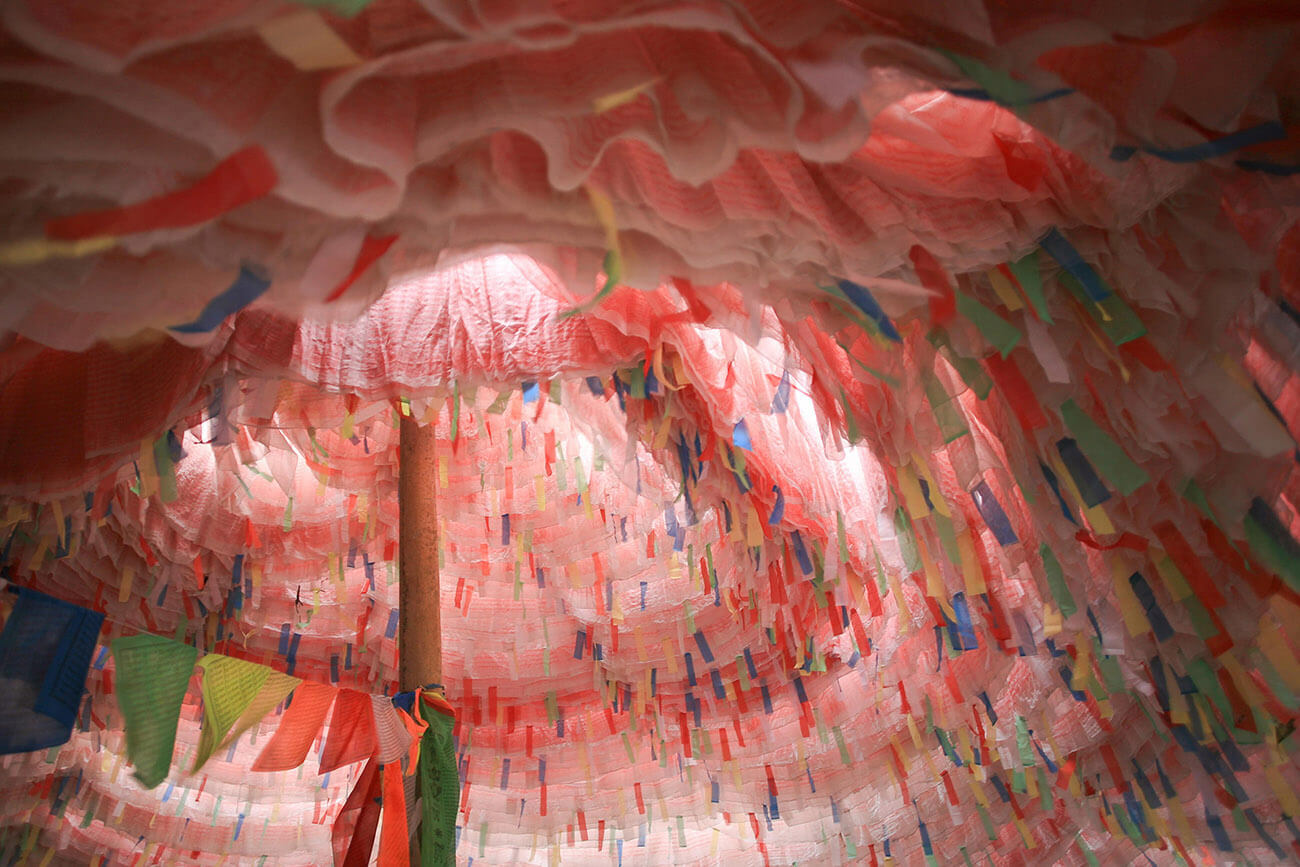
Stupa with Bon prayer flags East Tibet, Sichuan province, PR China
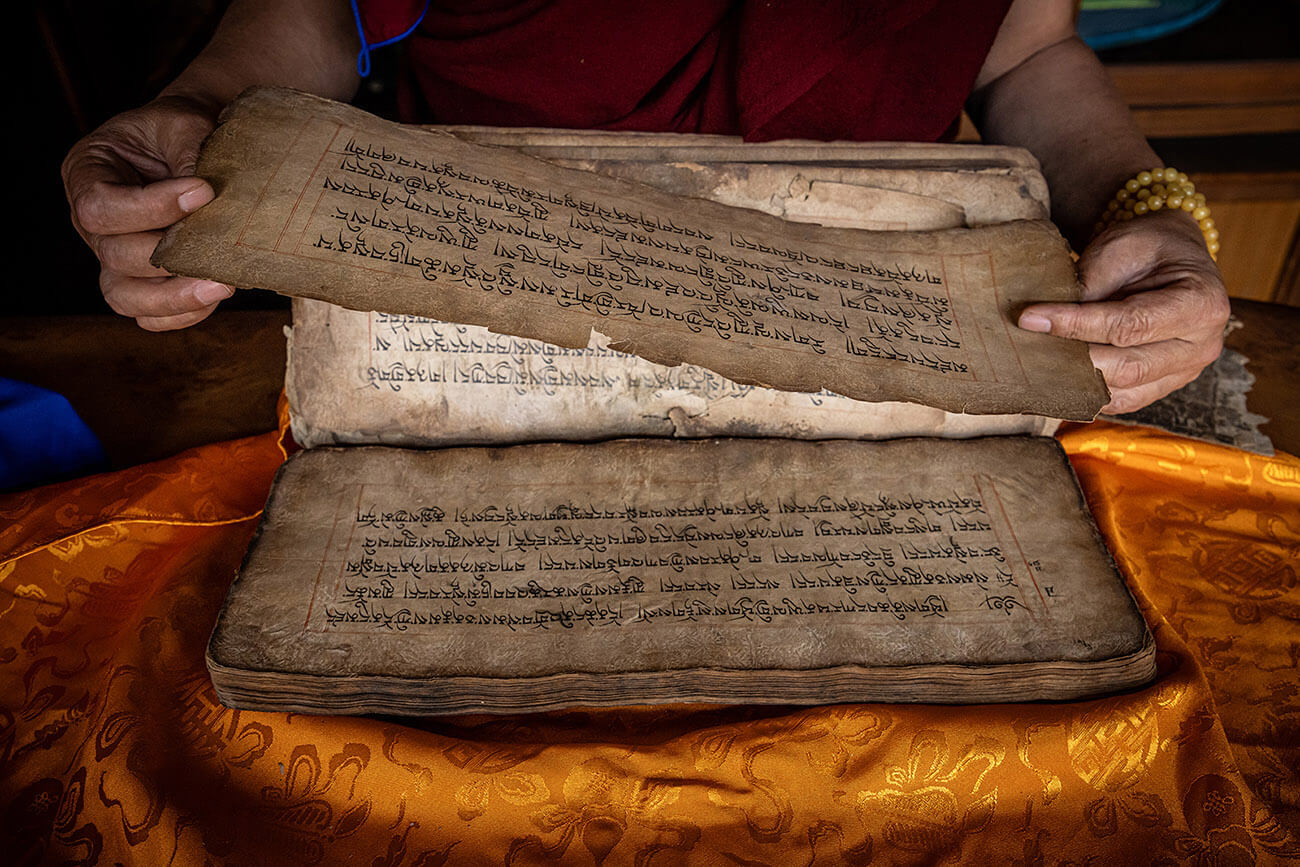
Bön lama carefully displays an ancient manuscript at Triten Norbutse Monastery in Kathmandu. Established in 1987, this monastery is a key center for the preservation and study of the Bön religion, an indigenous spiritual tradition of Tibet. The monks here are dedicated to protecting their heritage, engaging in ritual practices, teaching, and transcribing sacred texts. This manuscript represents a piece of that legacy, offering a glimpse into the deeply rooted spiritual practices and philosophies of Bön, a tradition that predates and has persisted alongside Tibetan Buddhism for centuries. Kathmandu, Nepal
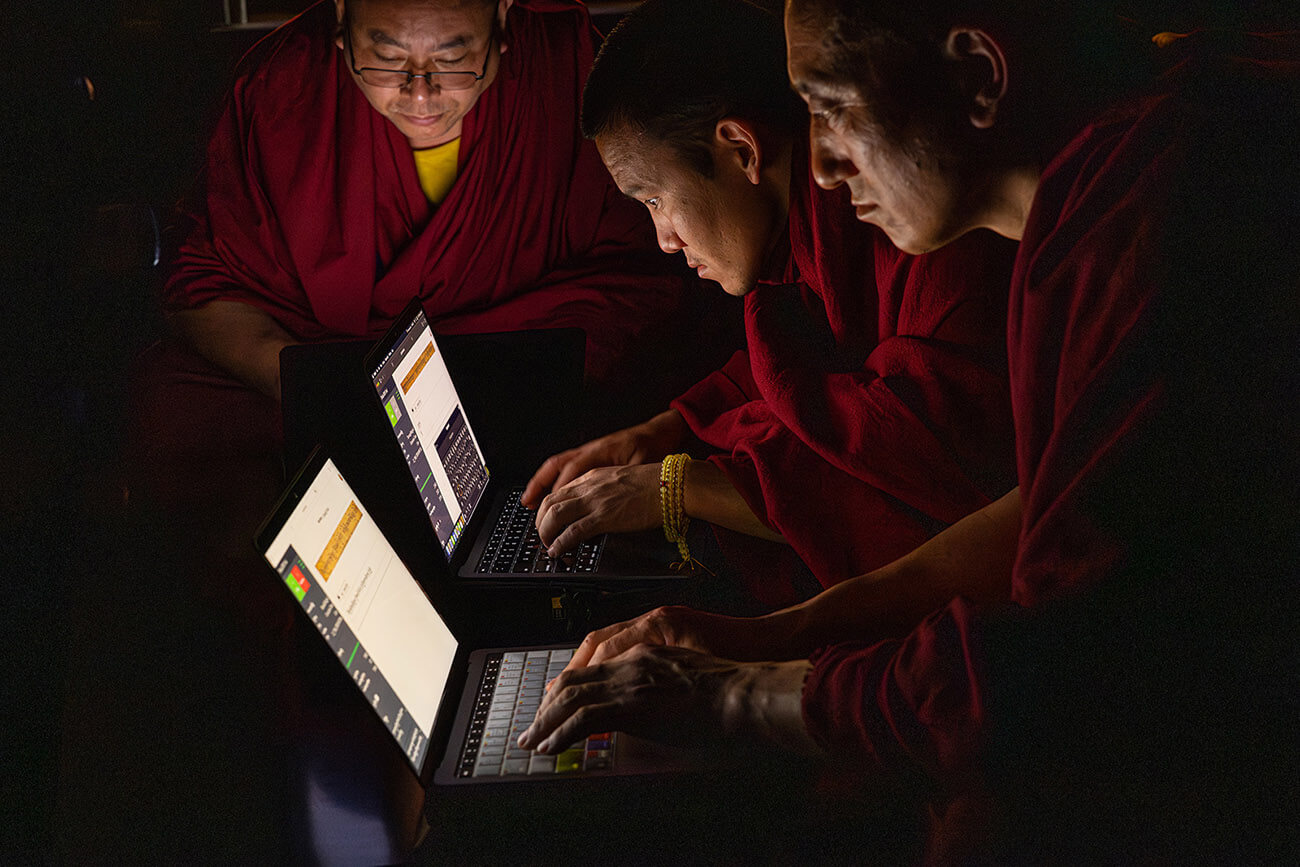
Bönpo monks are working on a transcription and correction of old pagan and non monastic village form of Bön texts at Triten Norbutse monastery in Kathmandu. Kathmandu, Nepal
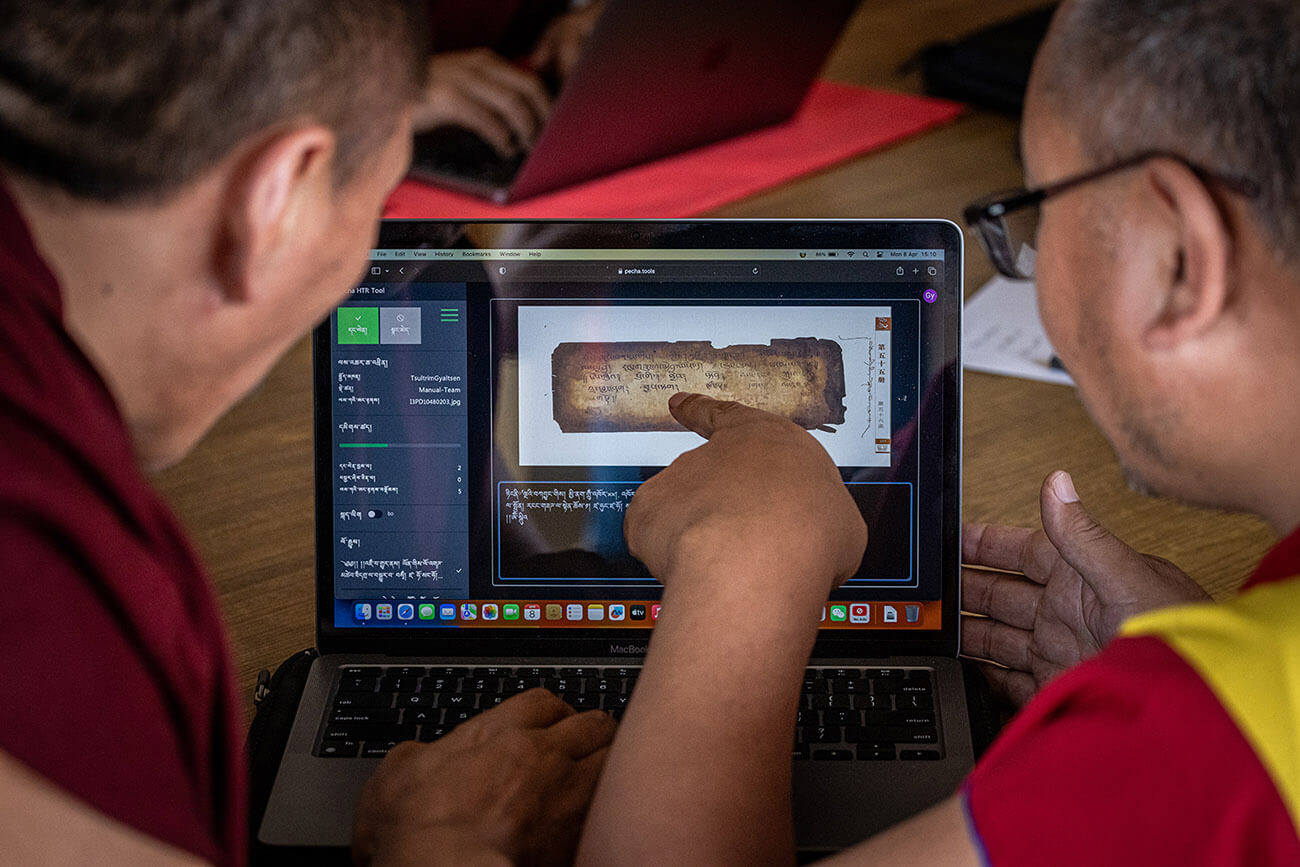
Here Bönpo monks are working on a transcription and correction of old pagan and non monastic village forms of Bön texts at Triten Norbutse monastery in Kathmandu. Kathmandu, Nepal
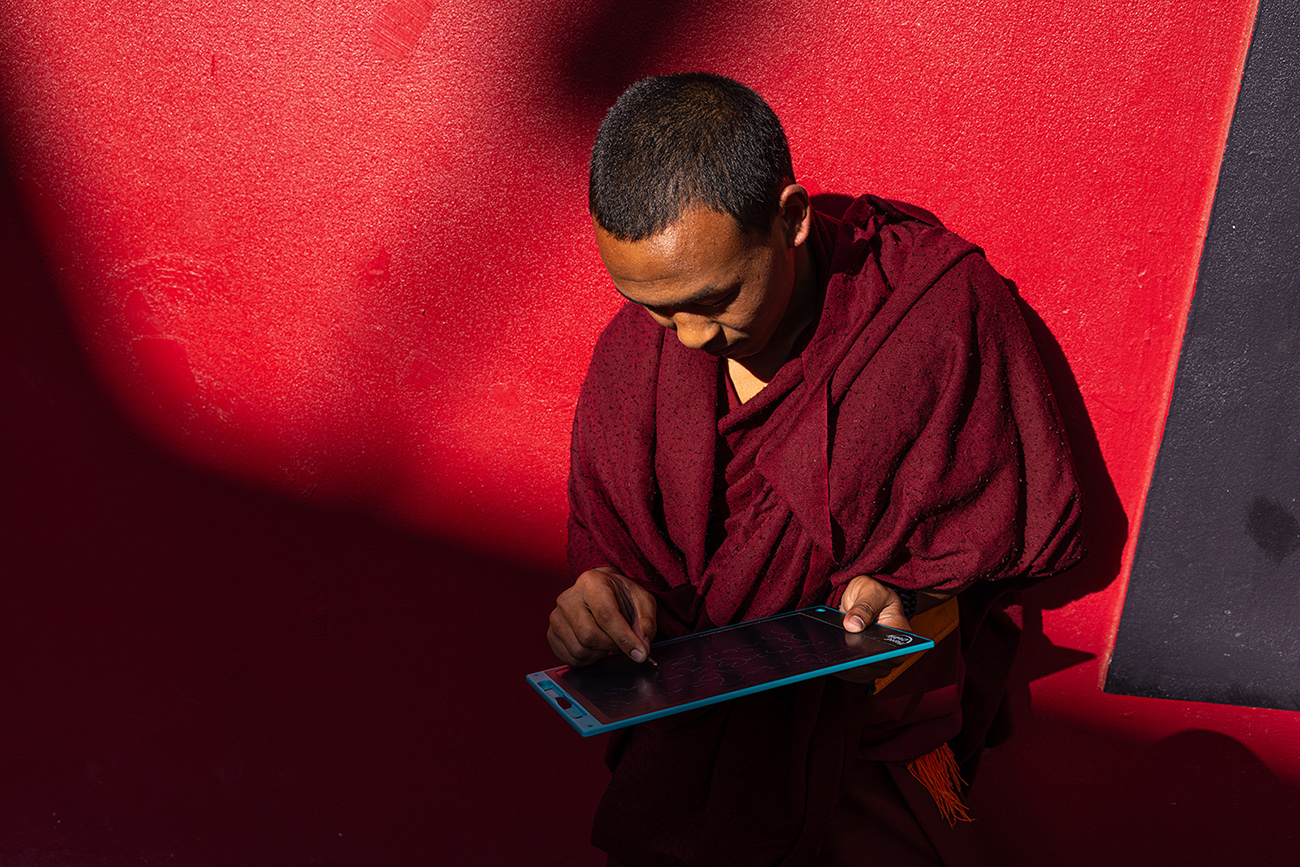
Bönpo monk playing with his tablet during his break at Triten Norbutse monastery in Kathmandu. Kathmandu, Nepal

Rachael Griffiths and Kalsang Norbu Gurung, both members of Pagan Tibet team, are having a meeting with the group of Bonpo monks that are working on a transcription and correction of old non monastic village form of Bön texts at Triten Norbutse monastery in Kathmandu. Kathmandu, Nepal
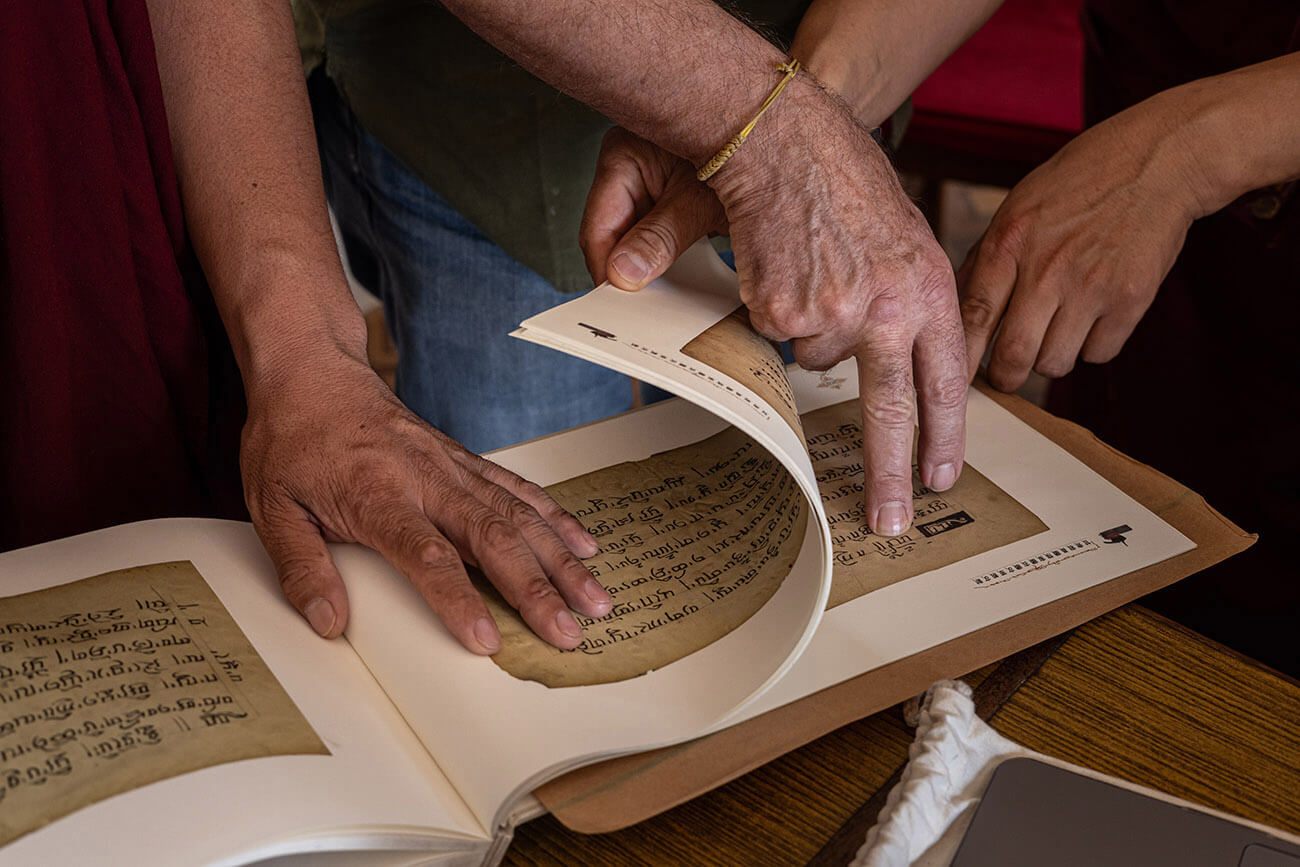
Professor Charles Ramble is discussing with a group of Bönpo monks how to use their Hand Written Text Recognition software which they will use for the transcription and correction of old non monastic village form of Bön texts that will be used to feed the AI model to learn reading and transcribing it by it self. Triten Norbutse monastery, Kathmandu, Nepal
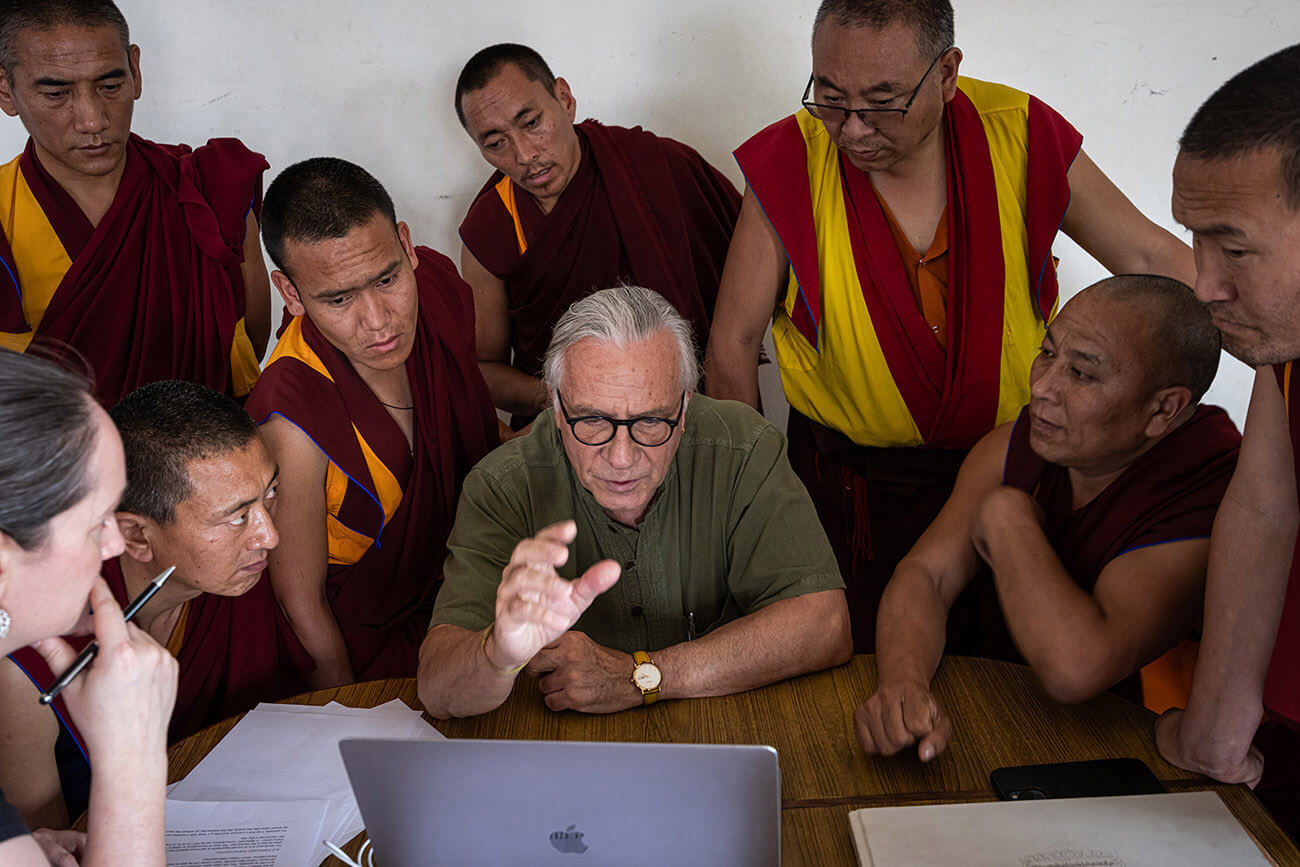
Professor Charles Ramble and Marieke Meelen both part of Pagan Tibet team are introducing Bönpo monks to their Hand Written Text Recognition software which they will use for the transcription and correction of old non monastic village form of Bön texts that will be used to feed the AI model created by Charles’s Pagan Tibet team to learn reading and transcribing it by it self. Triten Norbutse monastery, Kathmandu, Nepal
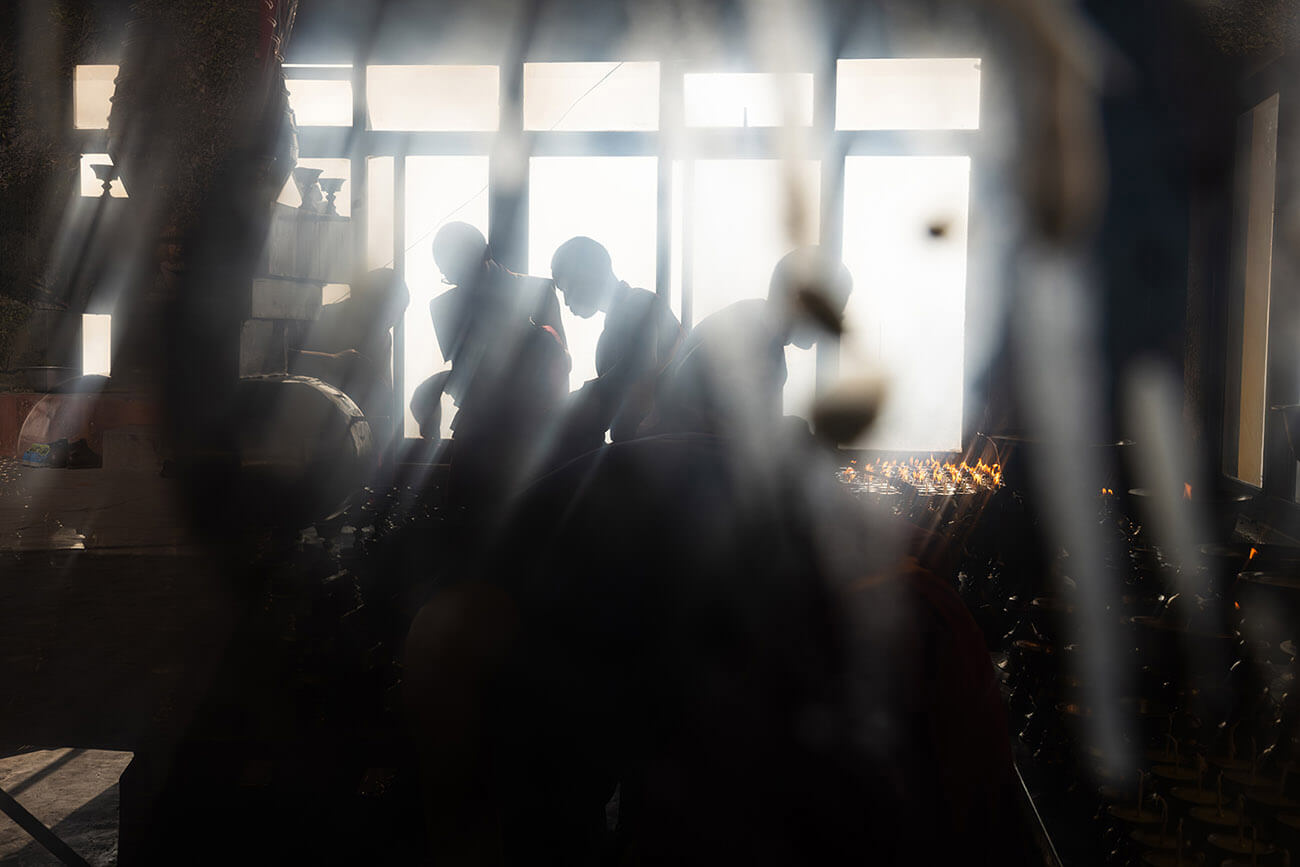
Bonpo monks are taking care of yak butter lamps during Geshe ceremony at Triten Norbutse monastery in Kathmandu. Part of the symbolism of lighting butter lamps for Tibetans is to dispel darkness and ignorance. Kathmandu, Nepal
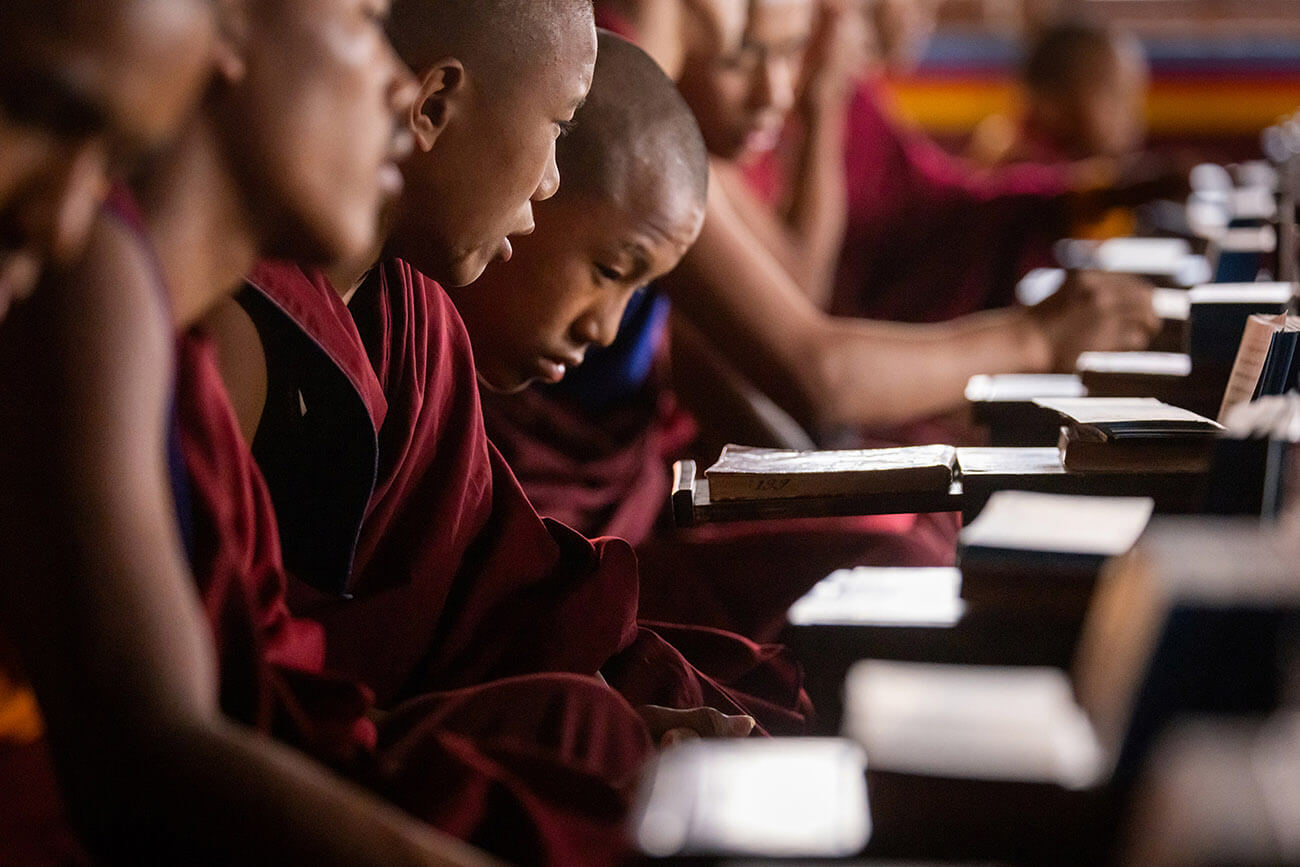
Triten Norbutse Monastery, located in Kathmandu is a significant center for the study and practice of the Bön religion. Established in 1987, it serves as a hub for the preservation of ancient Bön traditions and texts. The monastery is home to a vibrant community of monks dedicated to maintaining and revitalizing their spiritual heritage through ritual practices, education, and the transcription of sacred manuscripts. Here Bön monks at Triten Norbutse Monastery immerse themselves in their studies, learning the ancient texts and teachings of the Bön religion. Kathmandu, Nepal
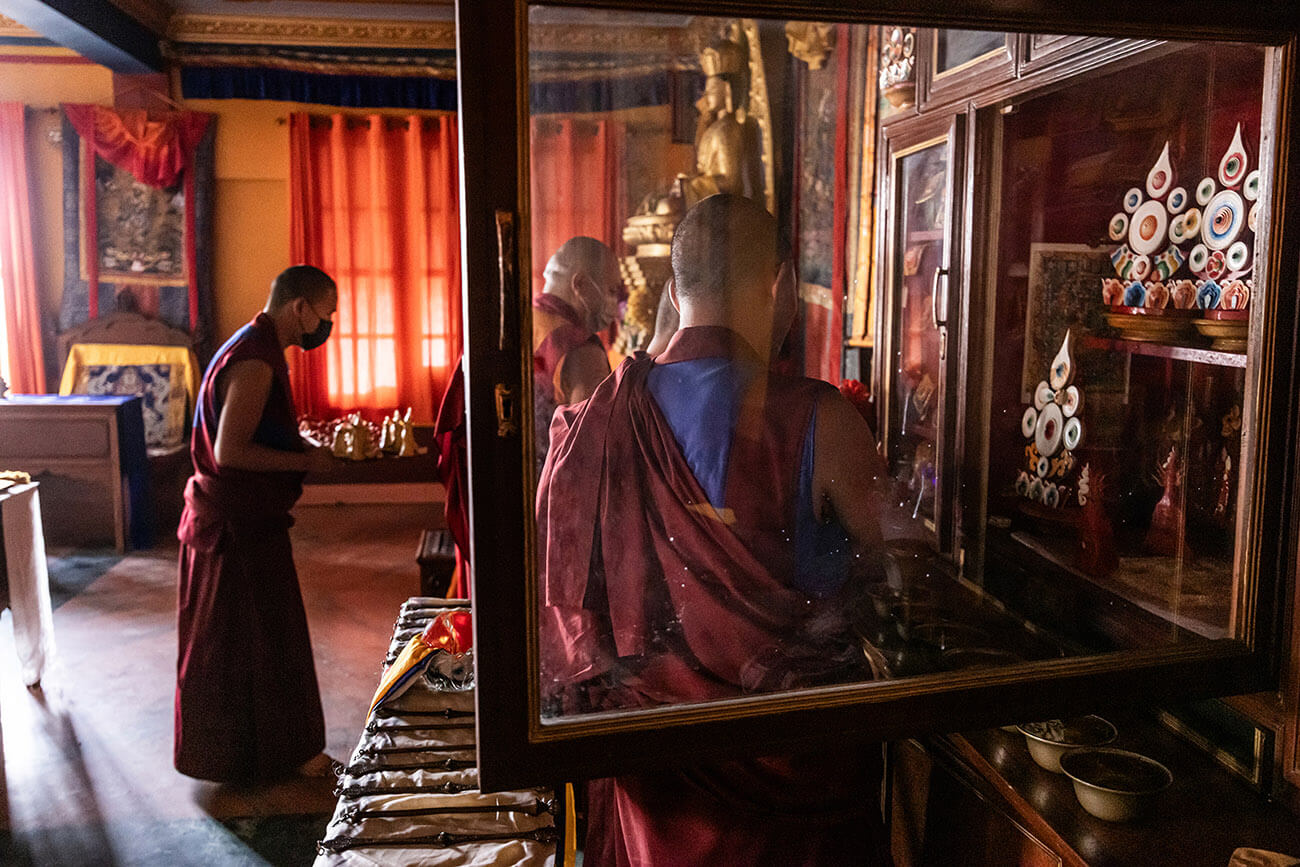
Triten Norbutse Monastery, located in Kathmandu, Nepal, is a significant center for the study and practice of the Bön religion. Established in 1987, it serves as a hub for the preservation of ancient Bön traditions and texts. The monastery is home to a vibrant community of monks dedicated to maintaining and revitalizing their spiritual heritage through ritual practices, education, and the transcription of sacred manuscripts. Here monks at Triten Norbutse Monastery engage in the meticulous art of making butter statues, representing various deities. These intricate creations, known as “Torma,” are used in ritual offerings and ceremonies, showcasing the monks’ dedication to their craft and the preservation of Bön traditions. Kathmandu, Nepal
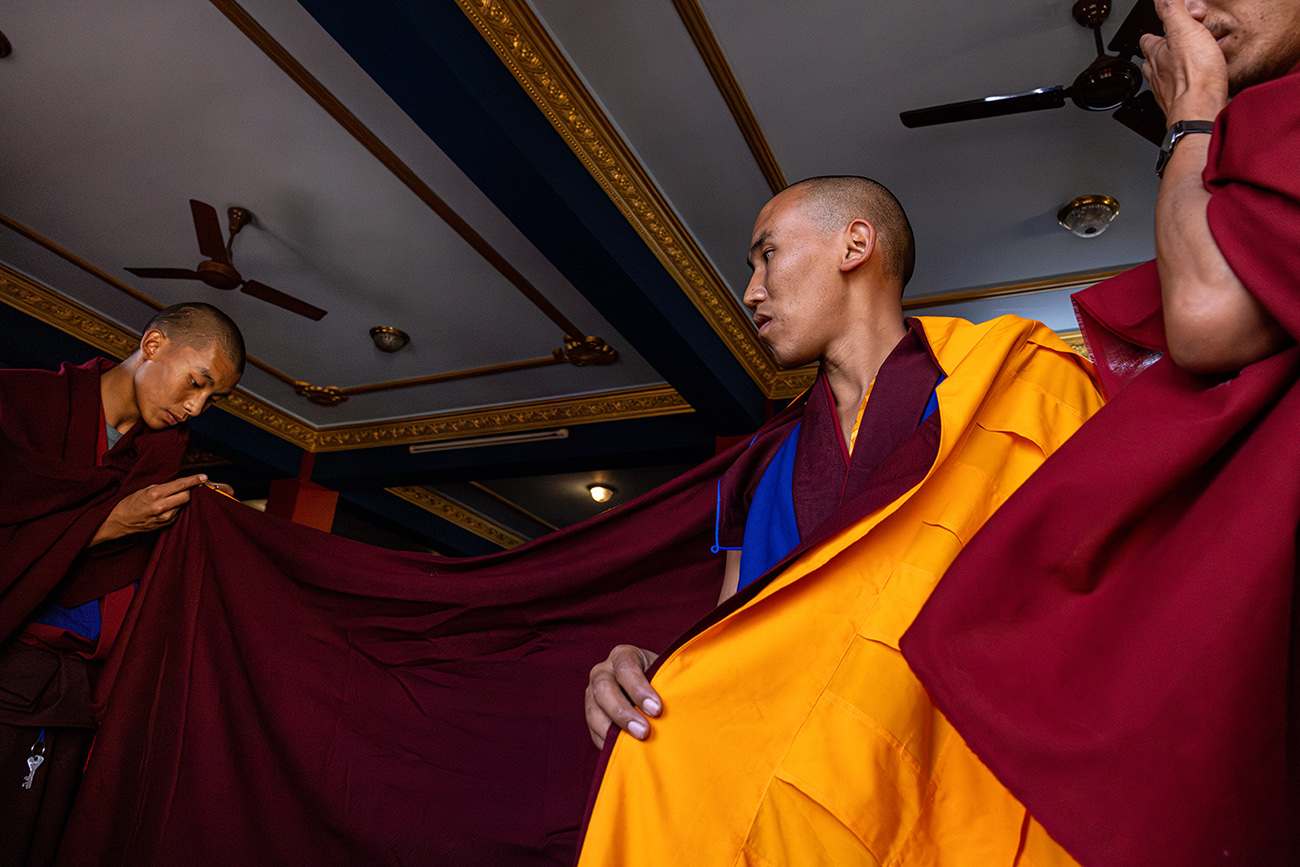
Bönpo monk getting dressed into his ceremonial robes for his Geshe ceremony at Triten Norbutse Monastery. Kathmandu, Nepal
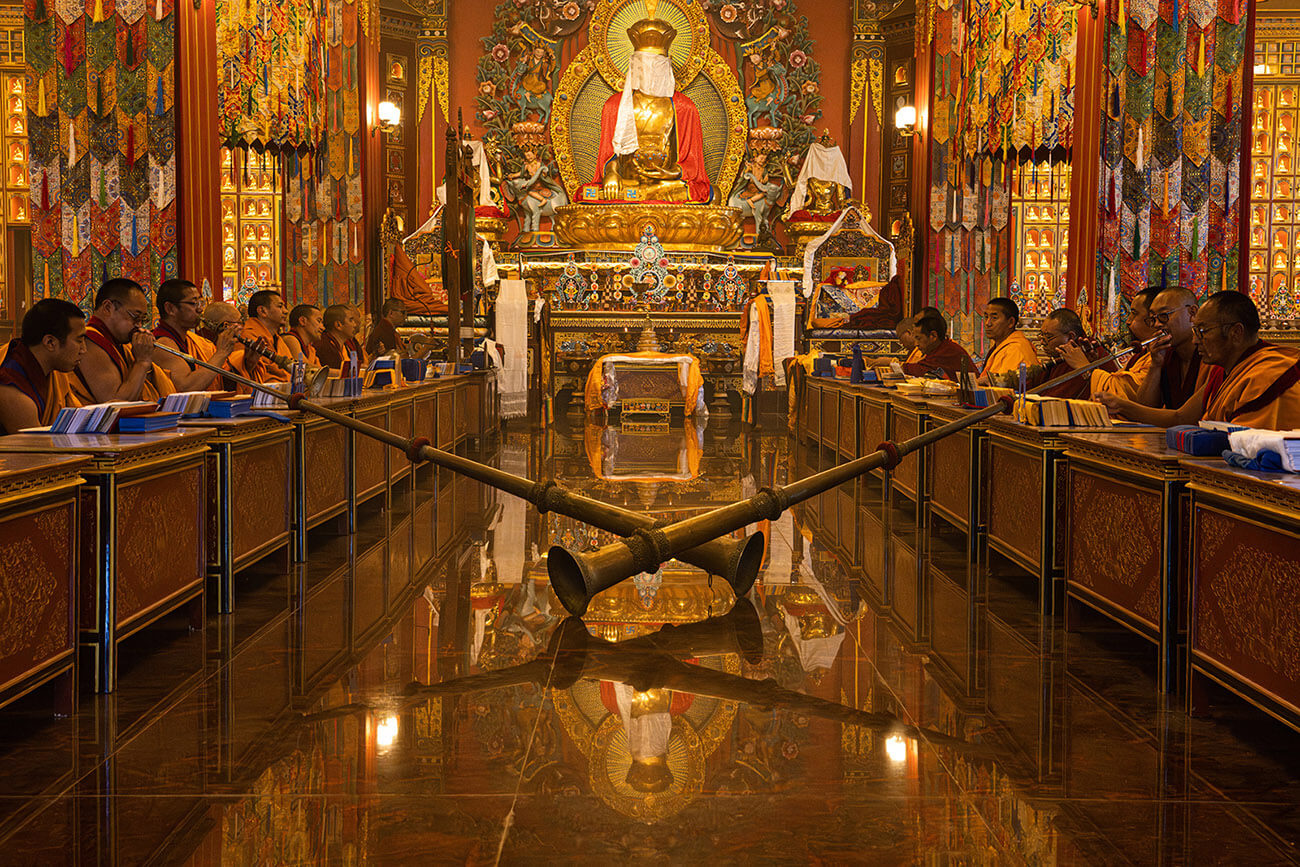
Bonpo monks during the centenary celebrations and long-life prayers in honour of Triten’s founding Rinpoche and the Consecration Ceremony and Inauguration of Triten’s newly completed temple, a moment of profound cultural and spiritual significance.
At the same time Bön Studies Conference was held at the monastery lectured by Pagan Tibet team that presented their early findings, including insights into non-monastic village Bön traditions and their links to pre-Buddhist Himalayan paganism. Triten Norbutse Bon Monastery Kathmandu, Nepal
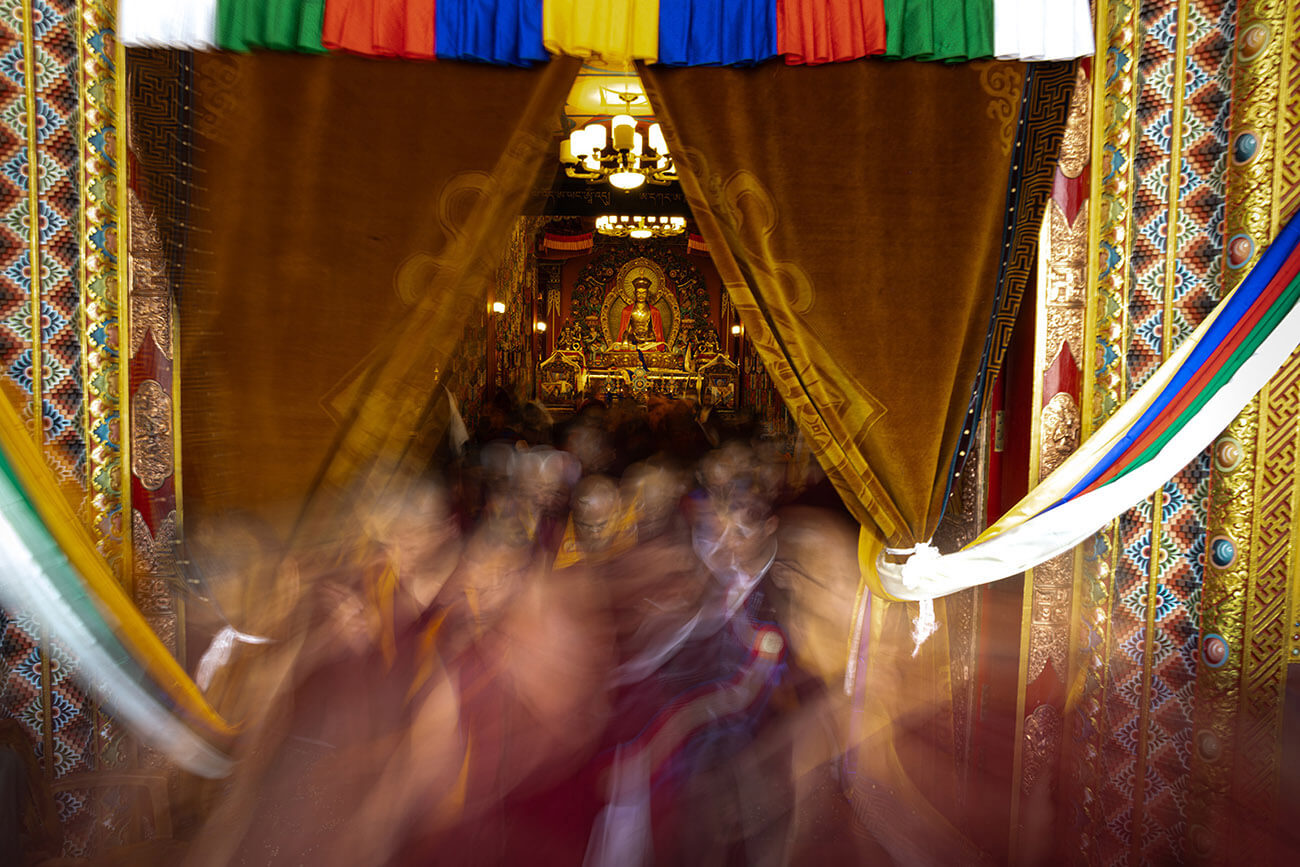
Bonpo followers and monks leaving the centenary celebrations and long-life prayers in honour of Triten’s founding Rinpoche
At the same time there was the Consecration Ceremony and Inauguration of Triten’s newly completed temple and the Bön Studies Conference was held at the monastery lectured by Pagan Tibet team that presented their early findings, including insights into non-monastic village Bön traditions and their links to pre-Buddhist Himalayan paganism. Kathmandu, Nepal
These images were created using a Polaroid Land Camera 110A and produced through a handcrafted Image/Color Transfer technique on Hahnemühle fine art paper, using discontinued FujiFilm FP-100C instant film. This analog process allows for a one-of-a-kind aesthetic that visually shows the fragility and transience of the ancient traditions the project seeks to document.
The process begins in a completely dark environment to prevent premature exposure. Once the image is taken and the film is ejected, it is passed through the camera’s metal rollers to initiate the internal chemical development. Before the development is complete, the positive layer is carefully peeled away, and the remaining negative is placed face-down on moistened Hahnemühle paper. Using a hard rubber roller, the negative is firmly pressed against the paper, allowing the dyes to transfer directly into the paper fibres. After several minutes, the negative is removed, revealing a softly textured, ethereal impression of the original image.
This tactile and experimental approach produces unique, non reproductive results that embody the project’s larger themes of impermanence, transformation, and the delicate transmission of memory across time.

Dzar village in Muktinath valley is one of the capitals of the dukedom of Baragaon. Southern Mustang, Nepal

Bonpo monks during the centenary celebrations and long-life prayers in honour of Triten’s founding Rinpoche and Inauguration of Triten’s newly completed temple. Kathmandu, Nepal

A detail of Bon’s symbol Swastika in Triten Monastery. Kathmandu, Nepal

Bön monks at Triten Norbutse Monastery blowing a conch shell during the centenary celebrations in honour of Triten’s founding Rinpoche. Kathmandu, Nepal

Under his sacred tree the priest of Khinga village, performs an annual ritual for the propitiation of the territorial gods of the community at the occasion of the spring archery festival. Khinga village, Mustang, Nepal

Lhawön Takla performs an annual ritual for the propitiation of the territorial gods of the community at the occasion of the spring archery festival. He belongs to an ancient class of pagan priests known as lhawön, who were widespread in the past but have almost disappeared because of a combination of factors. These include the growing influence of Buddhism, which looks down on these indigenous Tibetan traditions, and also increasing outmigration, leaving the community deprived of young men who would be able to inherit the mantle of the ageing priests. Khinga village, Mustang, Nepal

Lhawön Takla the priest of Khinga village during his preparations for an annual ritual for the propitiation of the territorial gods of the community.
“Lhawön” means “Bon priest of the gods”. Until very recent times, nearly all villages had their own lhawön. Takla is the last. He has held this role for the past 17 years. The duty of lhawöns is to worship the territorial gods of their community – a true pagan priest in that he is concerned purely with the gods of his locality. The term for “local territory” in Tibetan is yul, and these gods are known as yul-lha, territorial gods. The term yul corresponds exactly with the Latin pagus, meaning local territory, which is why it is appropriate to refer to these cults as being part of Tibetan pagan religion. Until the 1950s, the lhawöns of Khyengar and Jharkot used to sacrifice animals as part of the worship of these local gods, but the practice was stopped by a lama from Lubrak who belonged to the “reformed” Bon tradition. Animal sacrifice to local gods is still practised in one or two villages of the area. If these local gods are happy, they will provide protection to the community, keeping out illness, hailstorms and floods and assuring timely rainfall. Khinga, South Mustang, Nepal

Lhawön Takla the priest of Khinga village, in Nepal’s remote Mustang District, during his preparations for an annual ritual for the propitiation of the territorial gods of the community. Khinga, South Mustang, Nepal

Lhawön Takla propitiates Suna Yeshe, one of the main territorial divinities of Khinga, at his shrine on the roof of the village temple. Khinga, South Mustang, Nepal

Khinga villagers shooting with their bows during the spring archery festival. Khinga, South Mustang, Nepal

Home of the village god of Dzar village in Muktinath valley. Southern Mustang, Nepal
Tibetan pagan religion, a pre-Buddhist spiritual tradition, is on the verge of disappearing. Once a thriving community-based system of wisdom and ritual, paganism has faced centuries of suppression, first by the rise of Buddhism and later by political and social transformations. As younger generations move away from their ancestral practices and the number of pagan practitioners is dwindling, this unique tradition faces extinction, making its documentation and preservation more urgent than ever.
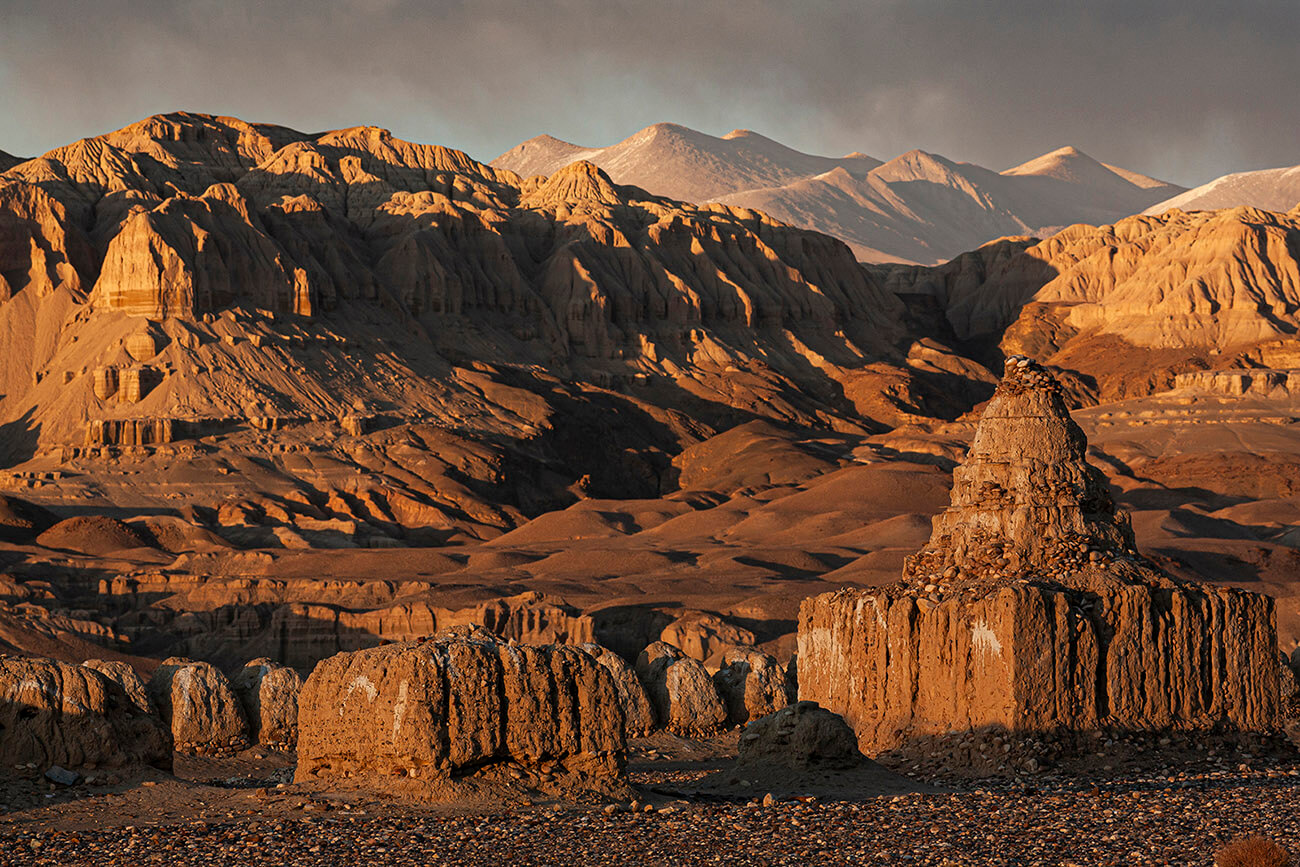
Until its annexation by the Lhasa-centred Tibetan empire in the 7th century, the western part of Tibet and adjacent areas in India were an ancient kingdom called Zhangzhung. It had several capitals, one of which is believed to have been in the upper reaches of the Sutlej valley and another near lake Dangra in northern Tibet. Followers of Bon (called Bonpos) believe that this land is where their religion originated before spreading to the rest of Tibet.
Zhangzhung had already been annexed to the Tibetan Empire in the 7th century but its name, its language and its customs had remained intact. But then the new Buddhist rulers seized power of Ngari in the 10th century and were not so disengaged: in his autobiography, one of the kings recounts how he forbade the indigenous culture and proscribed its religion, boasting of how he had had its priests and their scriptures walled inside a building that was then burned to the ground. The language of Zhangzhung was lost, to be replaced by Tibetan, but its religion, which had already suffered persecution by Buddhist kings in Central Tibet in the 8th century, survived in the eastern and southern borderlands, where it flourishes to the present day.
Tibetan Pagan and ancient Bon may have been overshadowed in Tibet by many centuries of state-sponsored Buddhism, but its enduring presence in the borderlands is a testimony to its continuing relevance in a world where the crisis in the relationship between humans and the natural world we inhabit has never been as acute as it is now.
Guge Kingdom, West Tibet
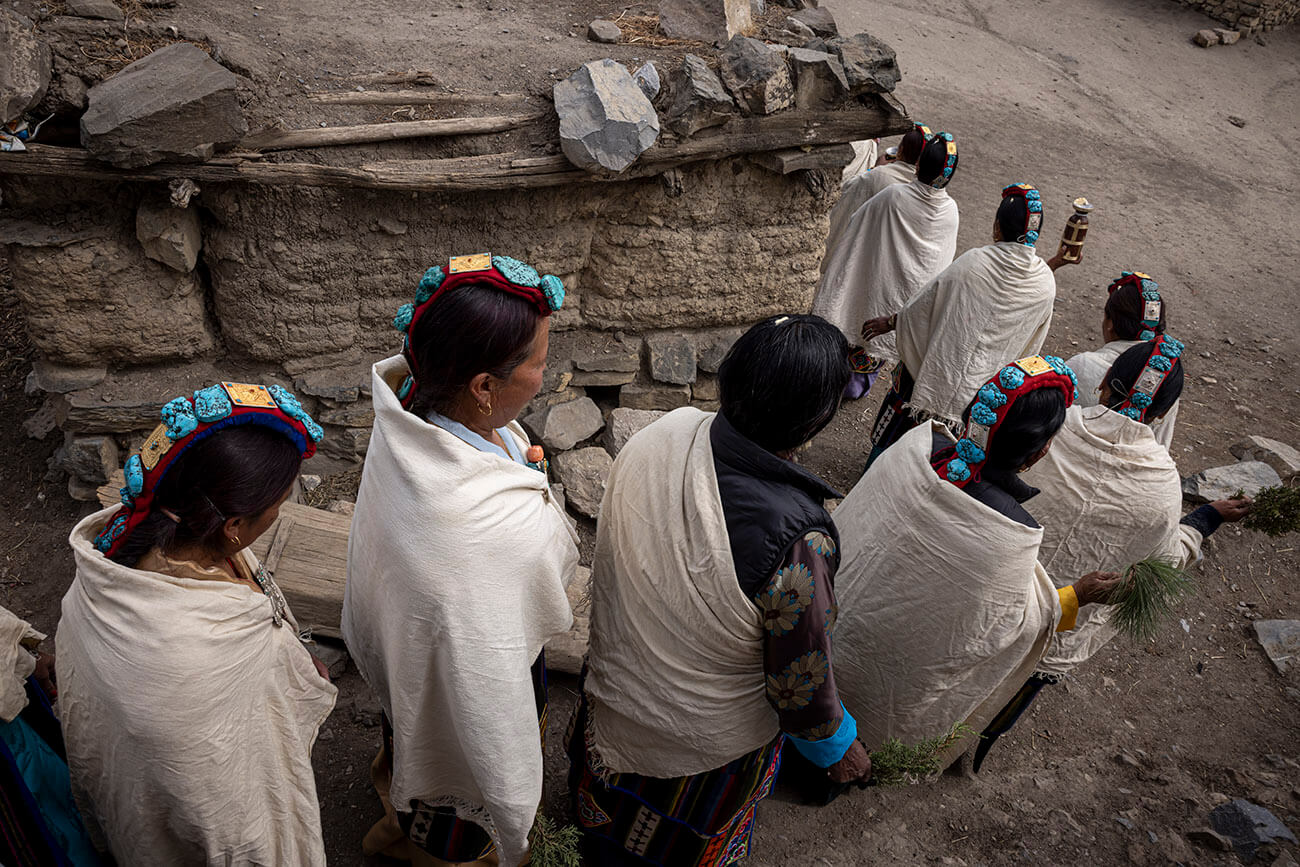
Group of local women in their traditional dresses are coming to greet Lhawön Takla the priest of Khinga village, during an annual spring archery festival.
“Lhawön” means “Bon priest of the gods” – his title – and Takla is his personal name. Until very recent times, nearly all villages had their own lhawön. Takla is the last. He has held this role for the past 17 years. The duty of lhawöns is to worship the territorial gods of their community – a true pagan priest in that he is concerned purely with the gods of his locality. The term for “local territory” in Tibetan is yul, and these gods are known as yul-lha, territorial gods. The term yul corresponds exactly with the Latin pagus, meaning local territory, which is why it is appropriate to refer to these cults as being part of Tibetan pagan religion. Until the 1950s, the lhawöns of Khyengar and Jharkot used to sacrifice animals as part of the worship of these local gods, but the practice was stopped by a lama from Lubrak who belonged to the “reformed” Bon tradition. Animal sacrifice to local gods is still practised in one or two villages of the area. If these local gods are happy, they will provide protection to the community, keeping out illness, hailstorms and floods and assuring timely rainfall.
Khinga, South Mustang, Nepal
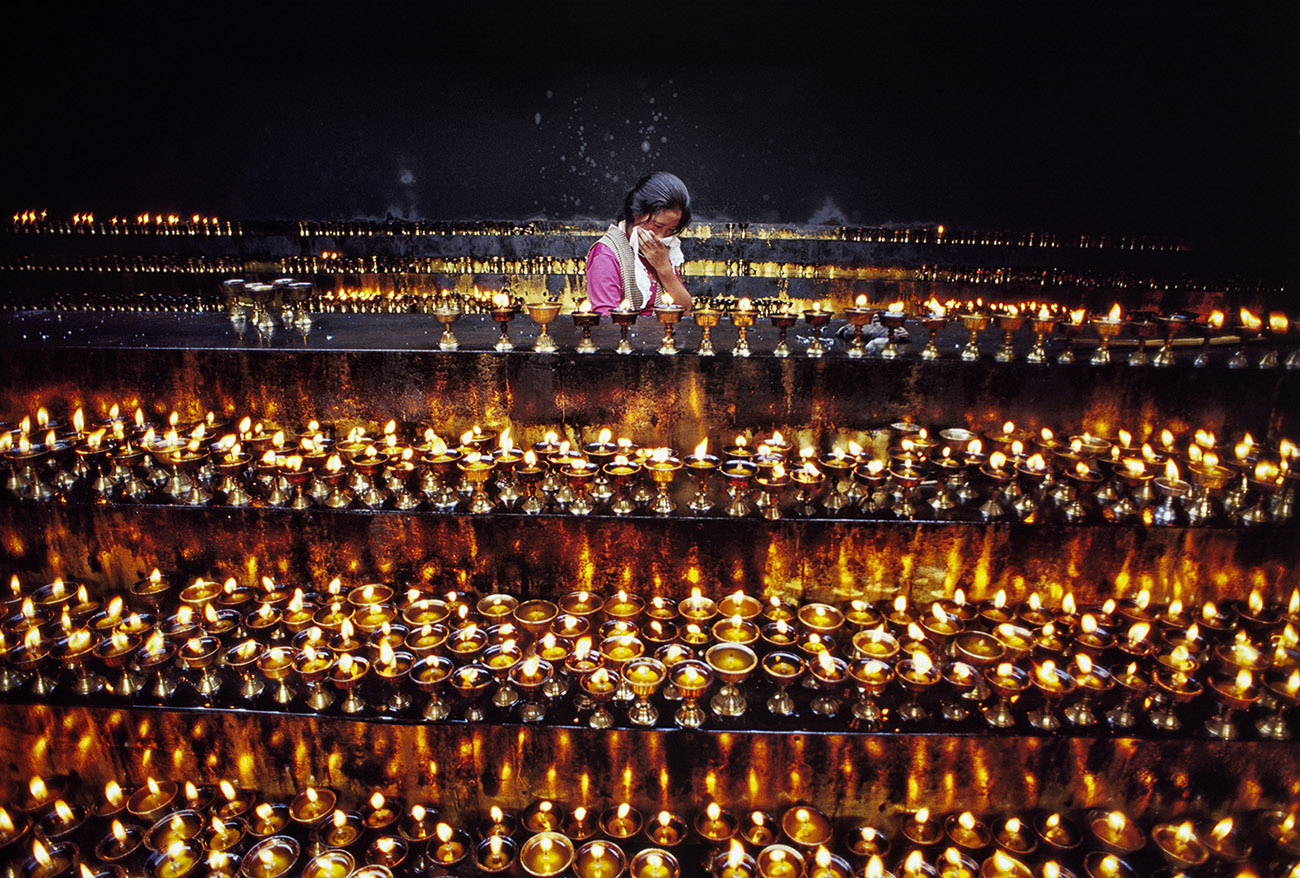
One of the great unsolved mysteries of Tibet is the nature of the Pagan religion that Buddhism encountered when it arrived in Tibet during the imperial period in the 7th-9th centuries. Buddhism was introduced to Tibet in the 7th century CE and became the official national religion in the 8th. A small percentage of Tibetans are followers of a religion called Bön, which its adherents (Bönpos) and Buddhists alike consider to be the country’s indigenous faith. Bön came to acquire many Buddhist features but retained a strand of more archaic traditions. Since there is no evidence that these traditions were actually called Bön prior to the establishment of Buddhism, we refer to them collectively as Tibetan Pagan religion. Girl taking care of yak butter lamps in Lhasa. Part of the symbolism of lighting butter lamps for Tibetans is to dispel darkness and ignorance. Lhasa, Tibet
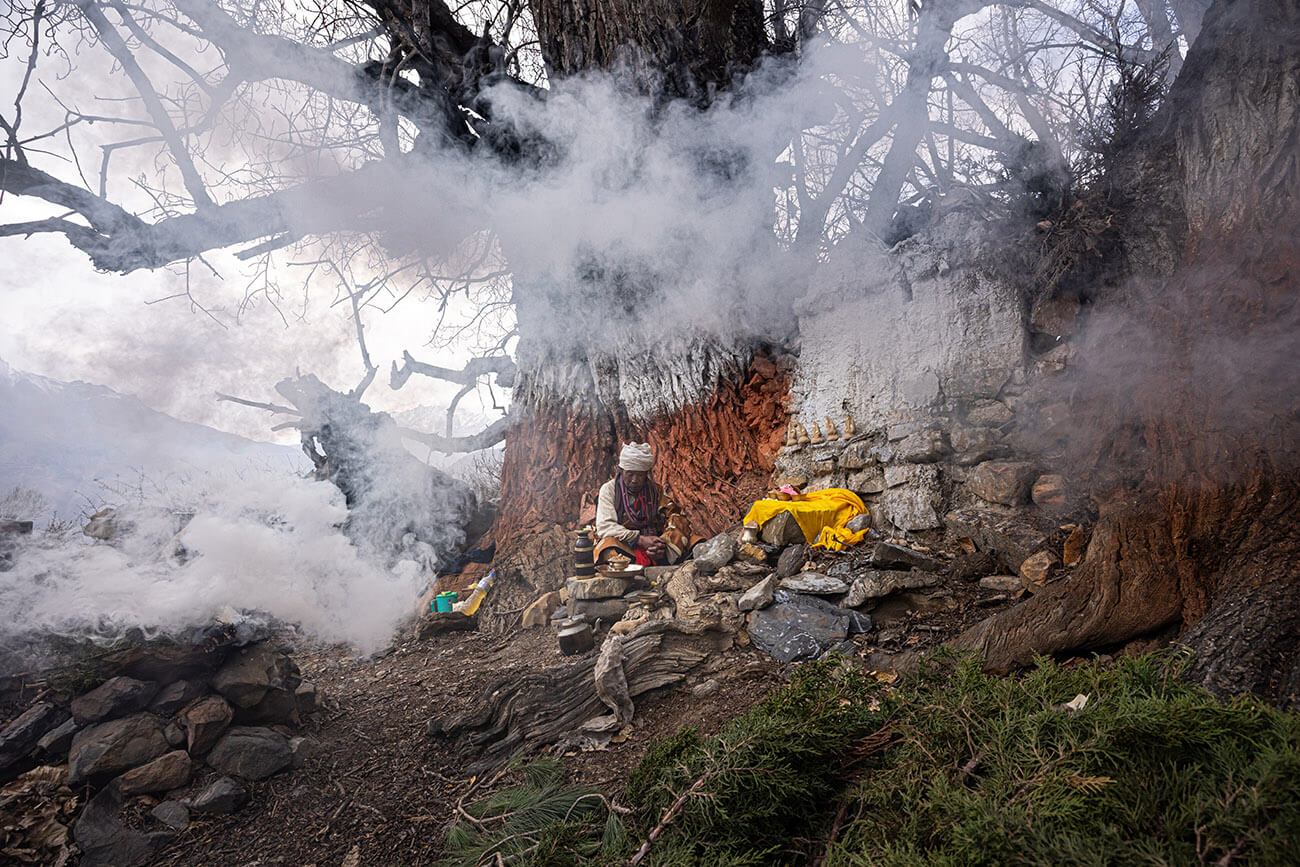
The priest of the village of Khinga, in Nepal’s remote Mustang District, performs an annual ritual for the propiation of the territorial gods of the community at the occasion of the spring archery festival. The officiant, named Takla, belongs to an ancient class of pagan priests known as lhabön, who were widespread in the past but have almost disappeared because of a combination of factors. These include the growing influence of Buddhism, which looks down on these indigenous Tibetan traditions, and also increasing outmigration, leaving the community deprived of young men who would be able to inherit the mantle of the ageing priests. Khinga village, Mustang, Nepal
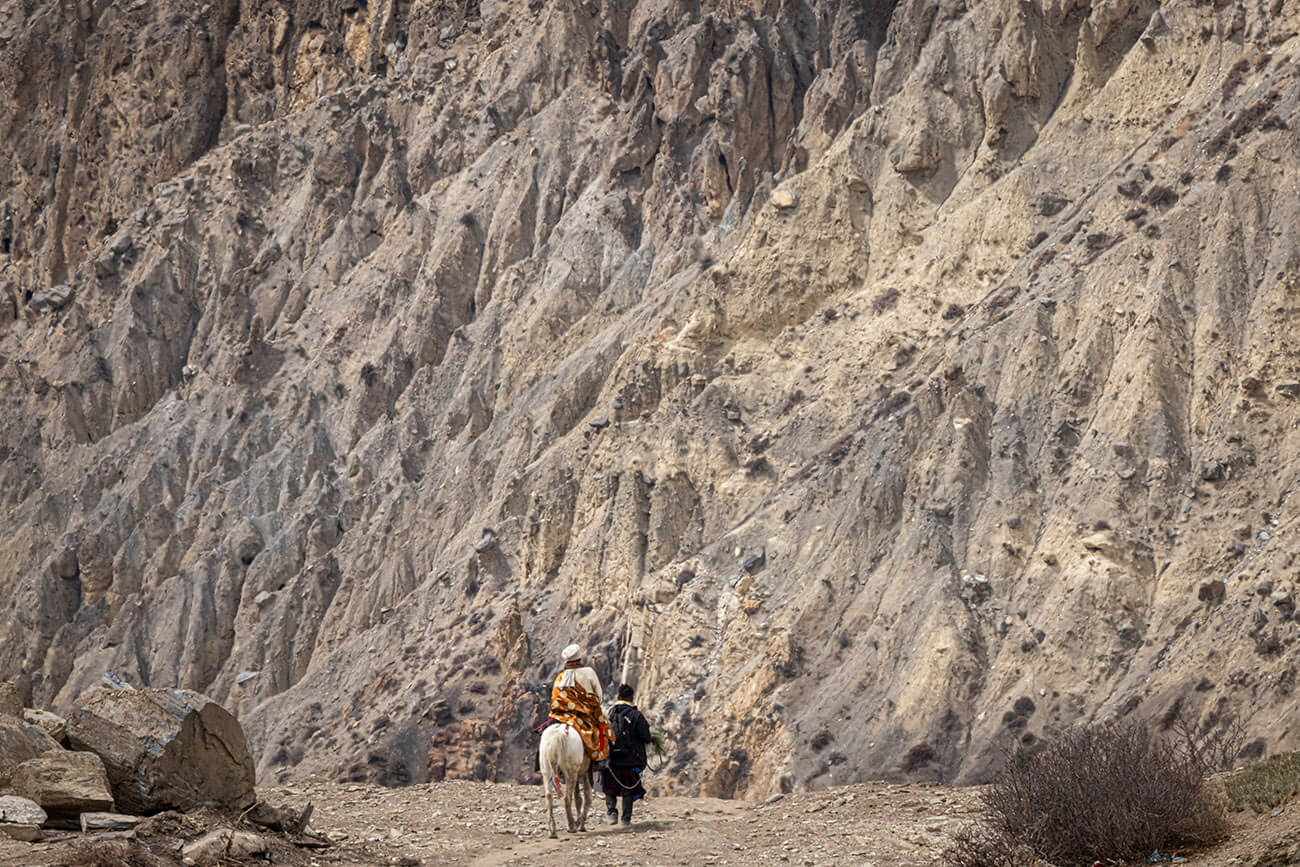
The priest of the village of Khinga, in Nepal’s remote Mustang District, on his way to perform an annual ritual for the propiation of the territorial gods of his community at the occasion of the spring archery festival. The priest, named Takla, has just taken a ritual bath at the sacred site of Muktinath, since tradition requires that he should purify himself before propitiating his gods, and is returning to Khinga mounted on an auspicious white horse let by one of the village headmen. Takla, belongs to an ancient class of pagan priests known as lhabön, who were widespread in the past but have almost disappeared owing to a combination of factors. These include the growing influence of Buddhism, which looks down on these indigenous Tibetan traditions, and also increasing economic outmigration, which has deprived the community of young men who would be able to inherit the mantle of the ageing priests. Muktinath, Nepal
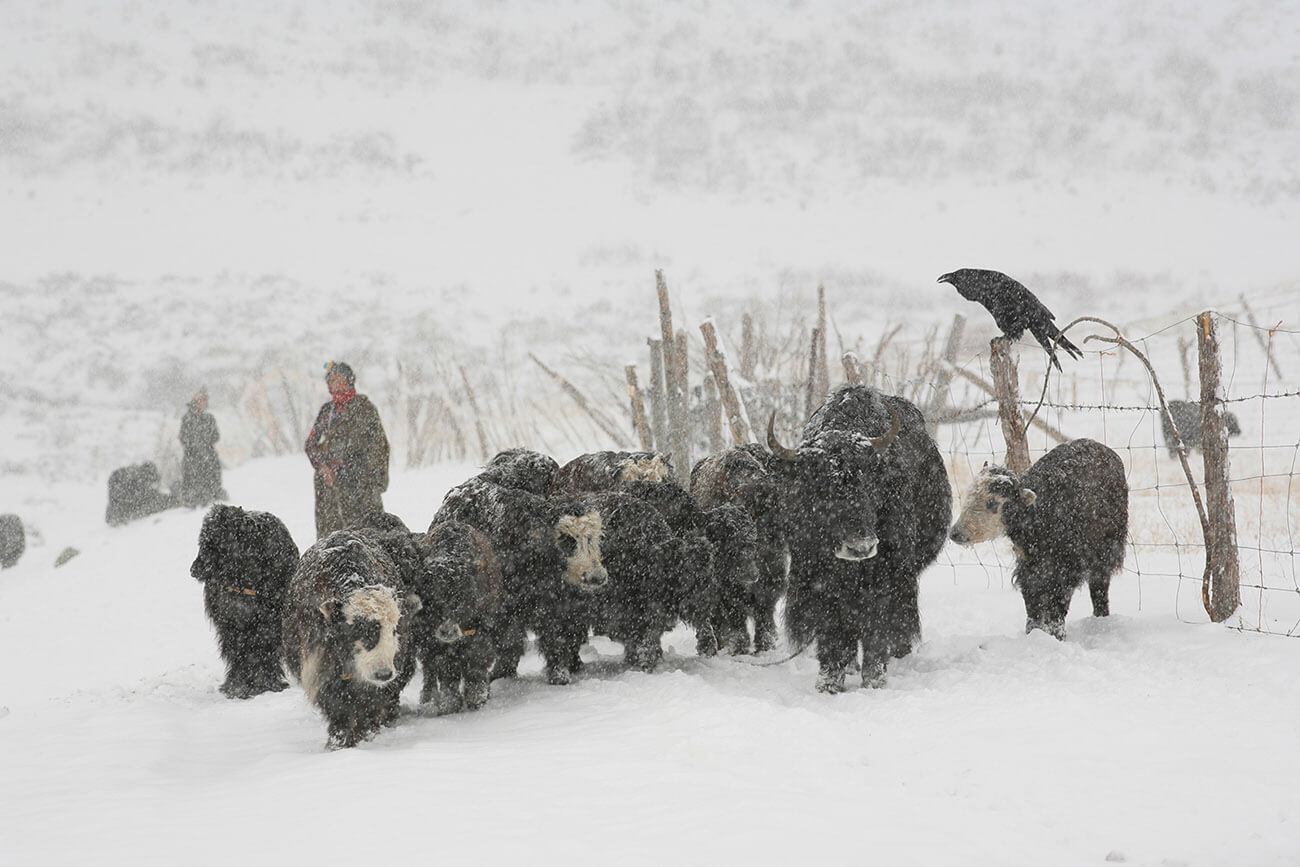
In 2005 a large discovery of old village form of Bon and pagan manuscripts was found constituting the ritual repertoire of a class of priests, called Leyu, in the Sino-Tibetan borderlands, and a smaller number of similar manuscripts from a culturally Tibetan minority group called the Baima, located in Sichuan. Gatse, Tibetan Prefecture, Sichuan, China
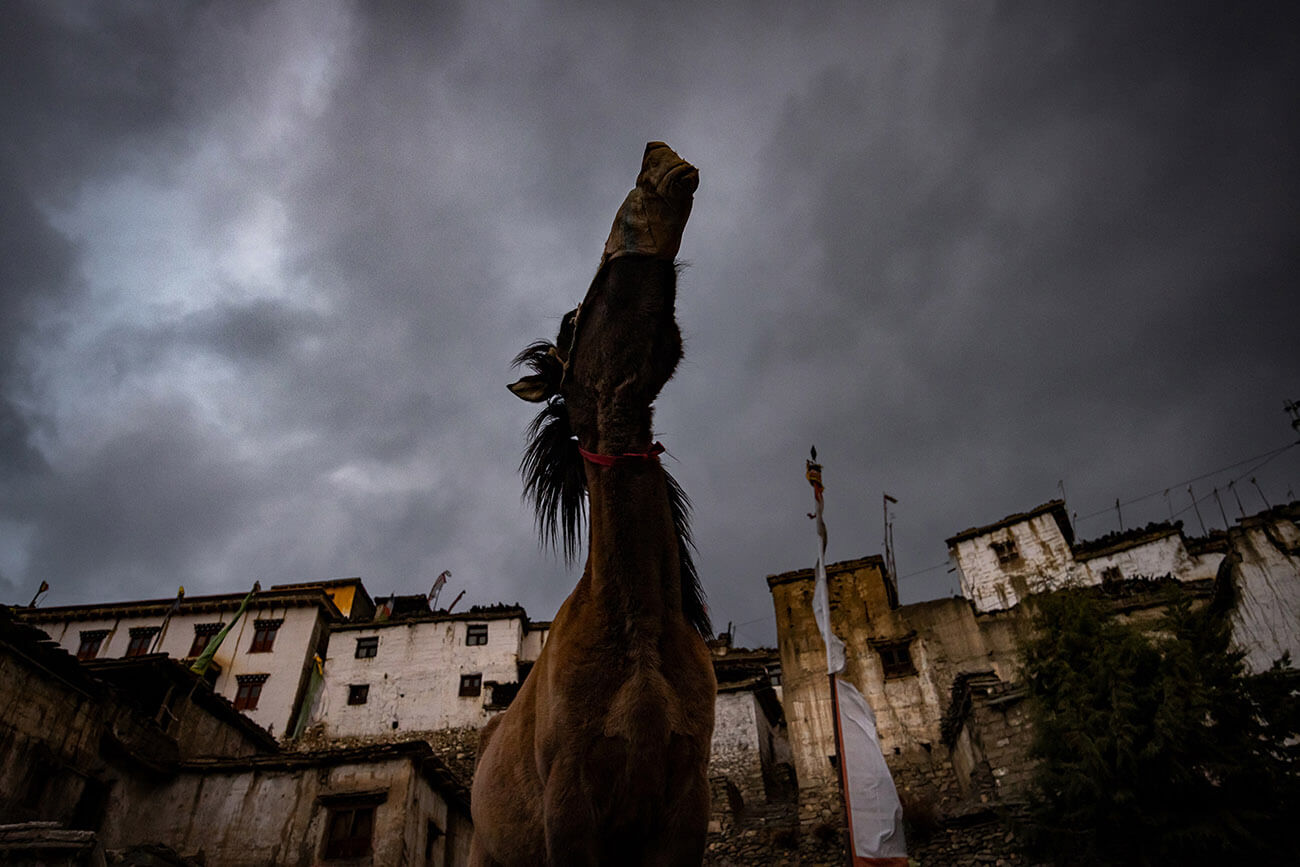
Horse eating grain from his bag attached to its face at Jharkot or Dzar village which is one of the capitals of the dukedom of Baragaon – southern Mustang – and the seat of the Kyekya Gangba noble family who ruled it on behalf of the kings of Mustang until they achieved their independence from Upper Mustang (the Kingdom of Lo) in the seventeenth century.
Jharkot, South Mustang, Nepal
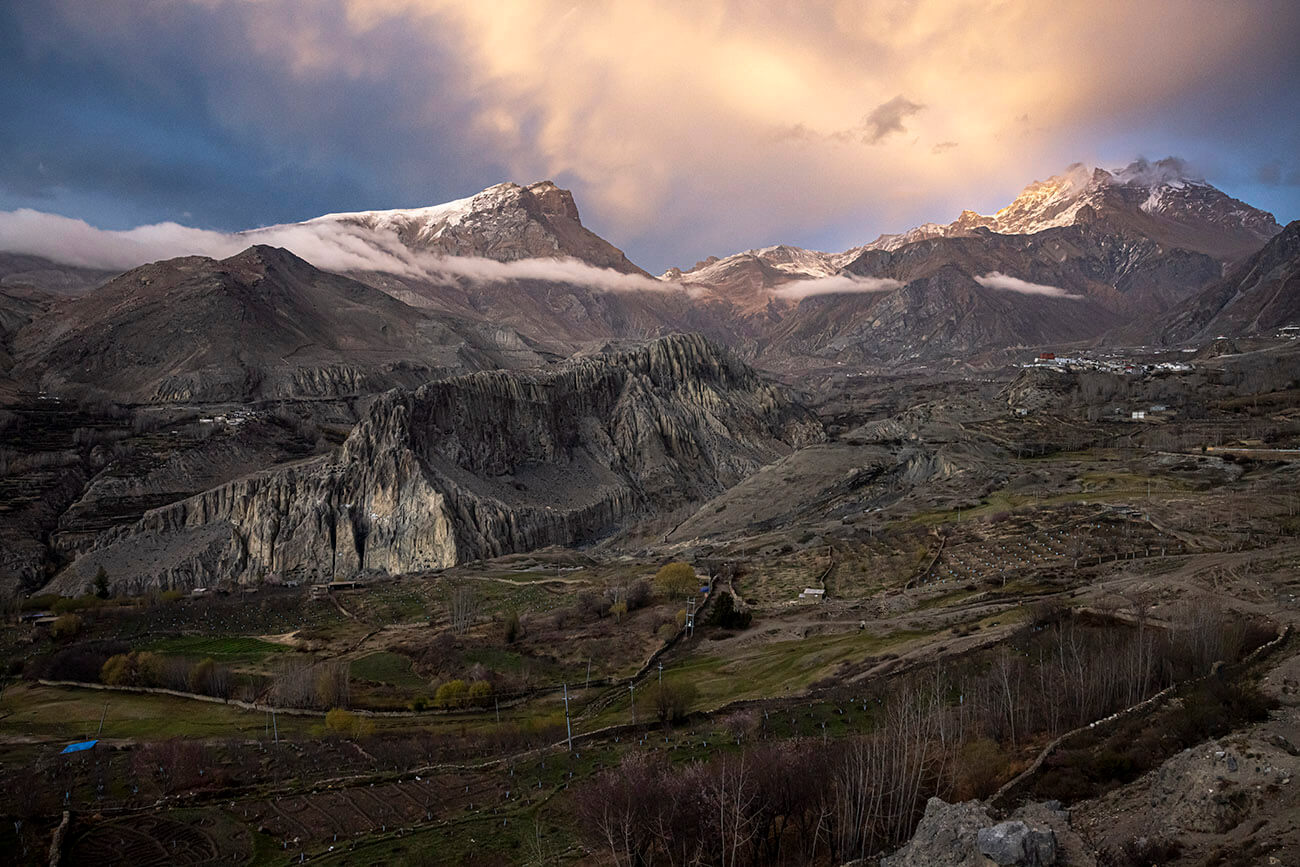
Dramatic sunset view of the Muktinath valley with Jharkot or Dzar village, one of the capitals of the dukedom of Baragaon – southern Mustang – and the seat of the Kyekya Gangba noble family who ruled it on behalf of the kings of Mustang until they achieved their independence from Upper Mustang (the Kingdom of Lo) in the seventeenth century. Jharkot, South Mustang, Nepal
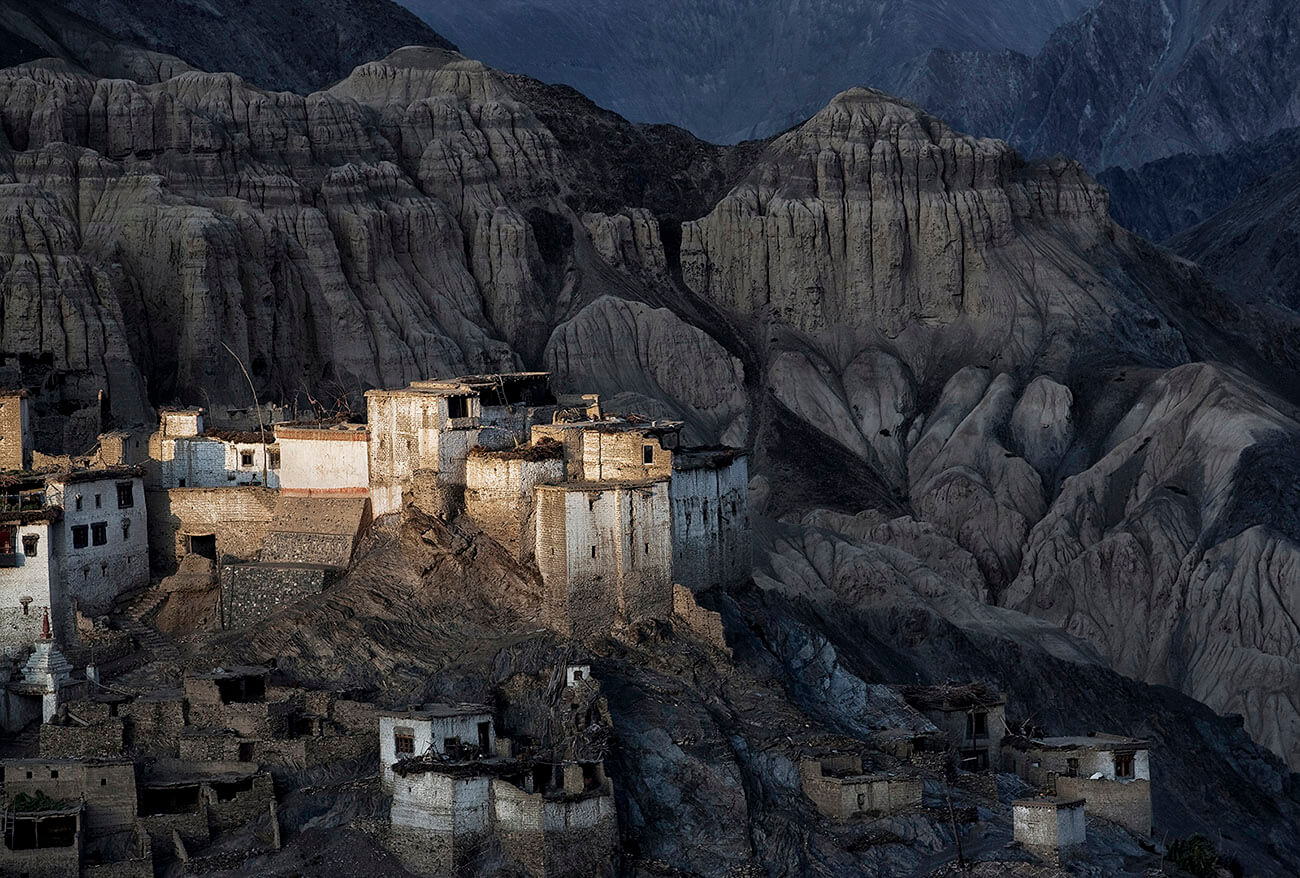
The landscape around Lamayuru, a small village in Ladakh, India, is famous for its moonlike landscapes carved into the Greater Himalayas. With its medieval village seemingly growing out of the rocky hillside below, is a monastery that belongs to the red-hat sect of Buddhism.
The name Lamayuru is supposed to be a local pronunciation of Lama Yungdrung. Yungdrung means swastika, especially the Bon swastika, so there’s a theory that Lamayuru was originally a Bon place. Lamayuru, Ladakh, India
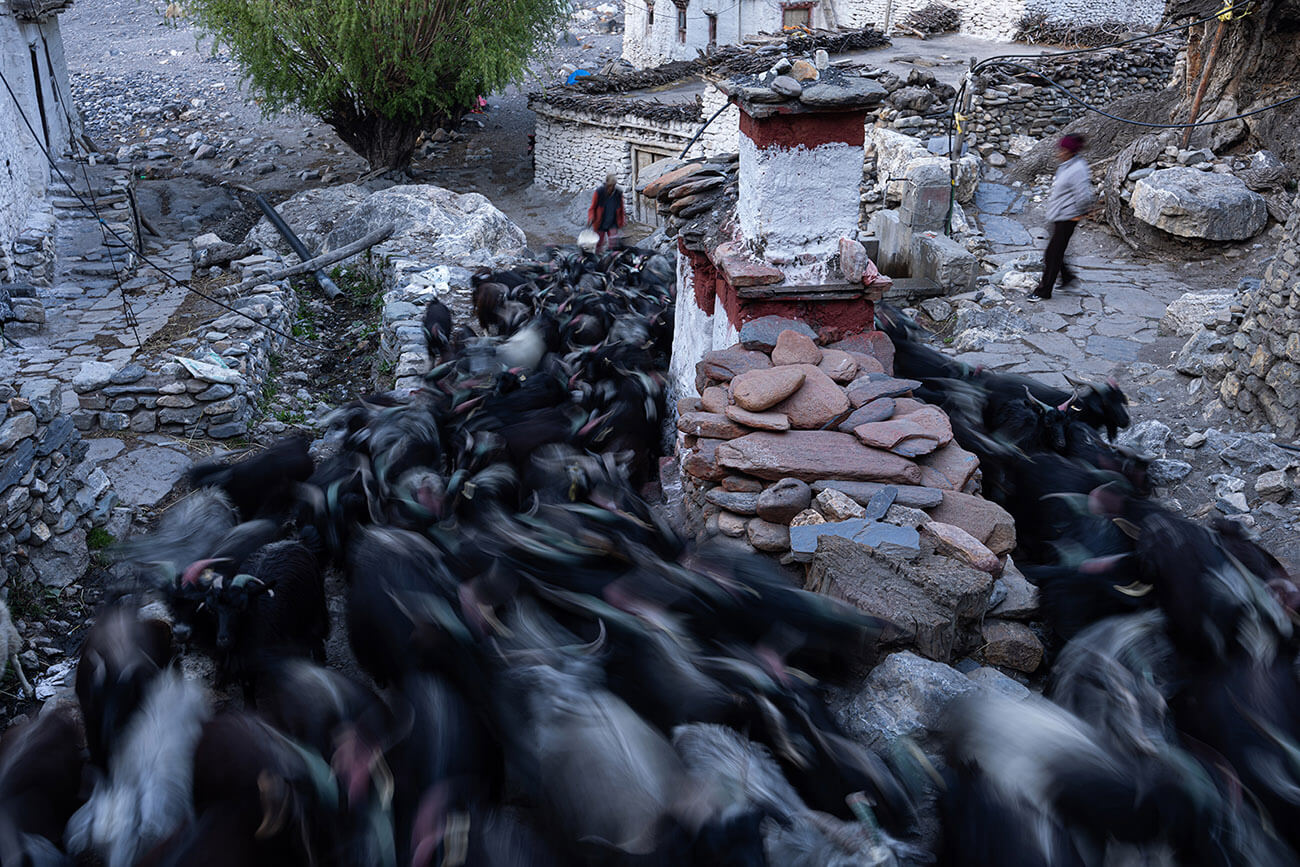
The people of Lubra, who believe the village was founded in the late 12th century, have preserved their traditional way of life. This includes practice of the ancient Bon religion. Lubra, a village of just fourteen families, is one of the few fully Bon villages in the World. According to local legend, the Bon Lama Yangton Tashi Gyaltsen came from Tibet via Dolpo and subdued the unruly local spirits, allowing the area to become suitable for human settlement. He planted a walnut tree as a divination to determine whether a village would flourish there. The ancient, gnarled walnut tree survives to this day.
Once tamed, the most powerful spirit among them hollowed out a sunny meditation cave on the hillside opposite the Panda Khola from modern-day Lubra as an offering to Yangton Tashi Gyaltsen, so he would have a suitable place for his practice. The name ‘Lubra’ refers to uniquely textured cliffs on that side of the Panda Khola, which look like snakeskin, spread out and frozen in time on the rock face. Serpentine naga spirits are known as ‘lu’ in the local Mustangi dialect of Tibetan, and ‘bra’ (also pronounced ‘dak’), means rock cliffs. Lubrak, South Mustang, Nepal
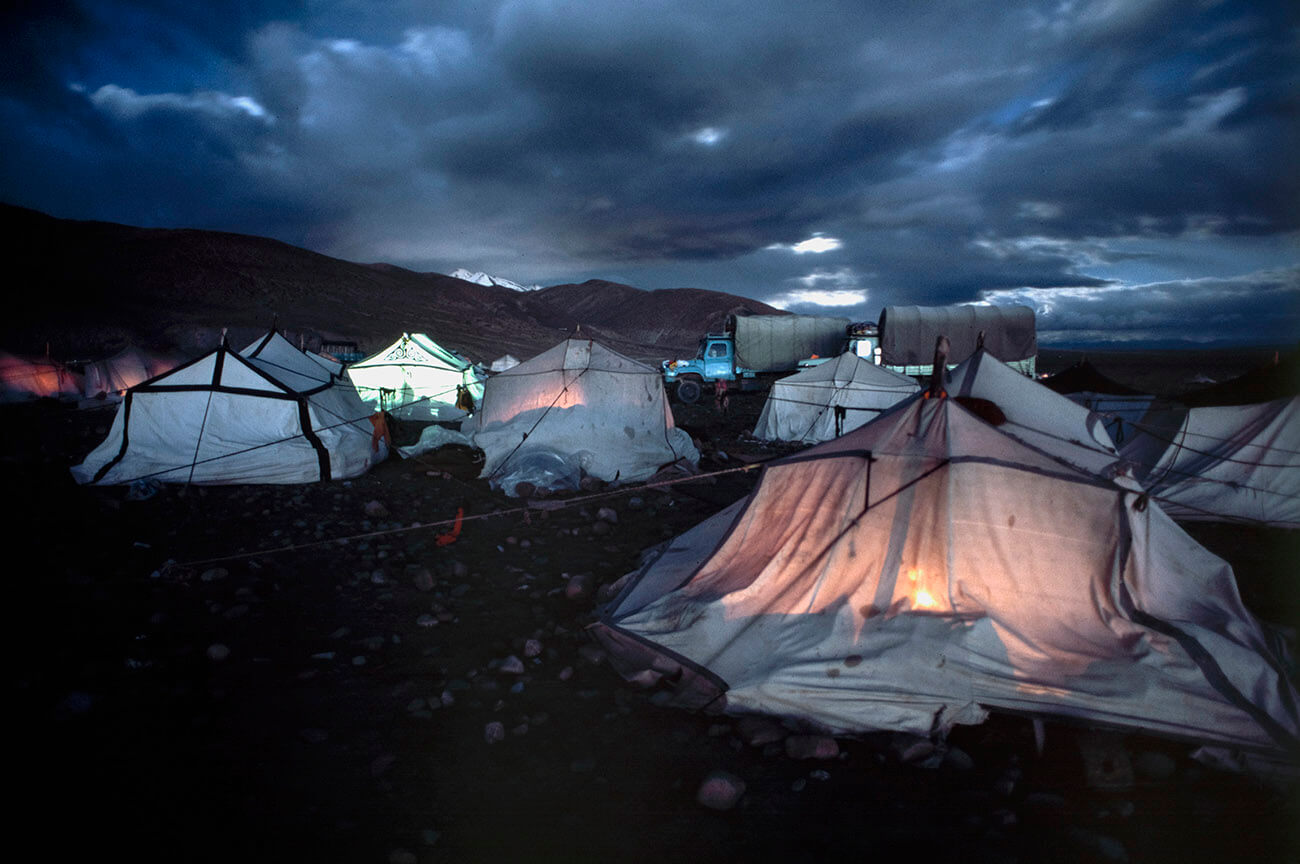
Mount Kailsash, which stands on the territory of what was once Zhangzhung, is sacred to several religions of South Asia, notably Hinduism, Buddhism and Jainism, and is also revered by Bonpos, for whom it is sacred for two main reasons: first, it is the soul mountain of the former kings of Zhangzhung; and secondly, in the same way as it is the abode of one of the major gods of the different religions – for example Shiva for the Hindus, and Chakrasamvara for the Buddhist – so the Bonpos worship it as the seat of one of their great tantric gods, named Gekhö.
Darchen village under the Holy Mt. Kailash full of pilgrim tents, West Tibet, China
Digging the Future focuses on the dangerous lives of underage gold miners in Burkina Faso, highlighting modern slavery and the adverse effects of gold mining.

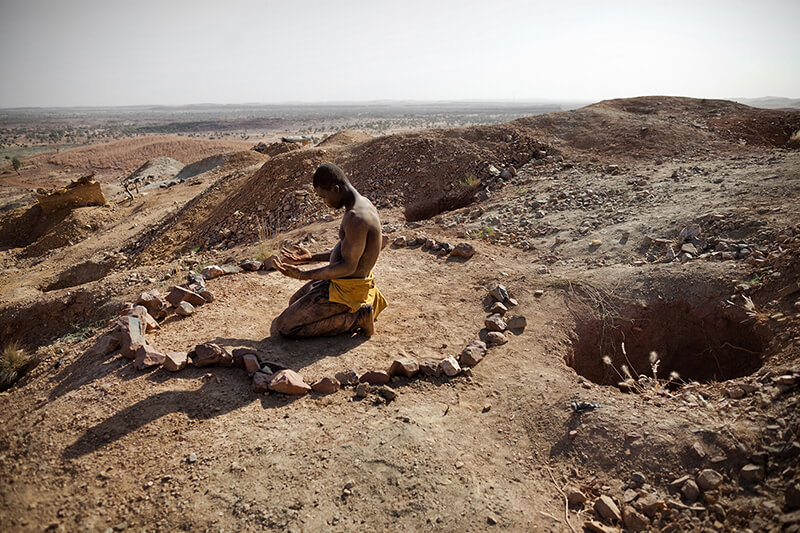
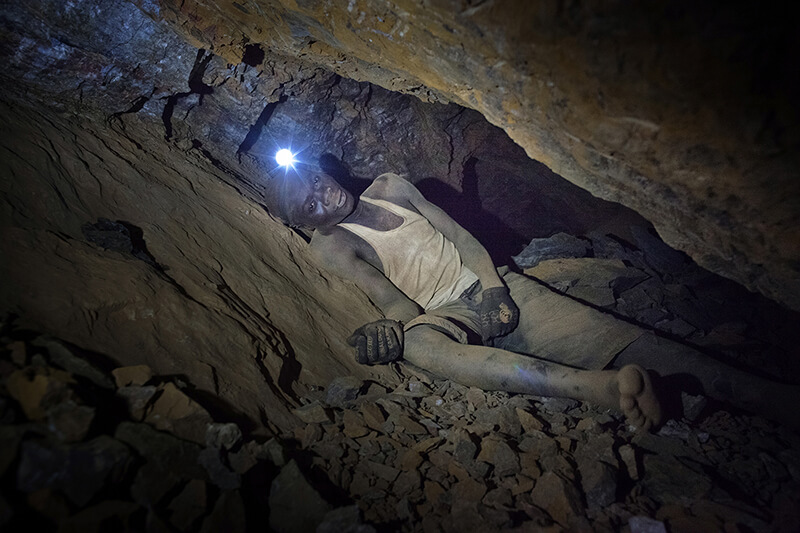

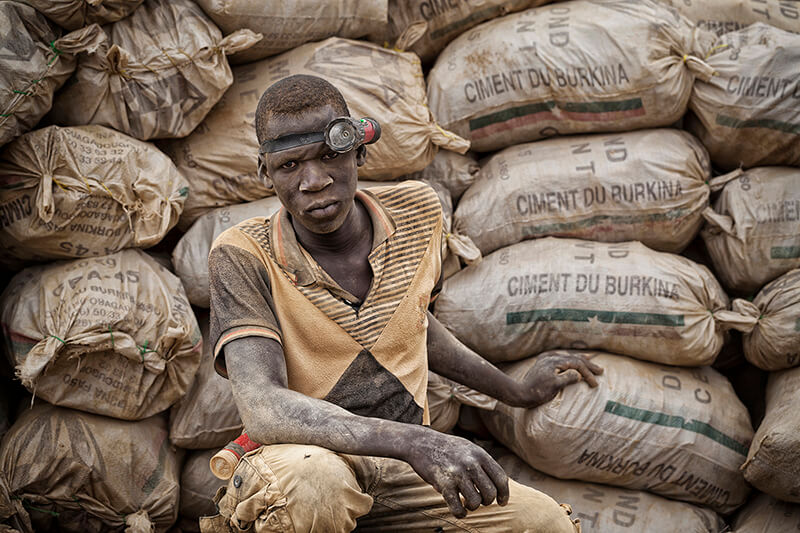

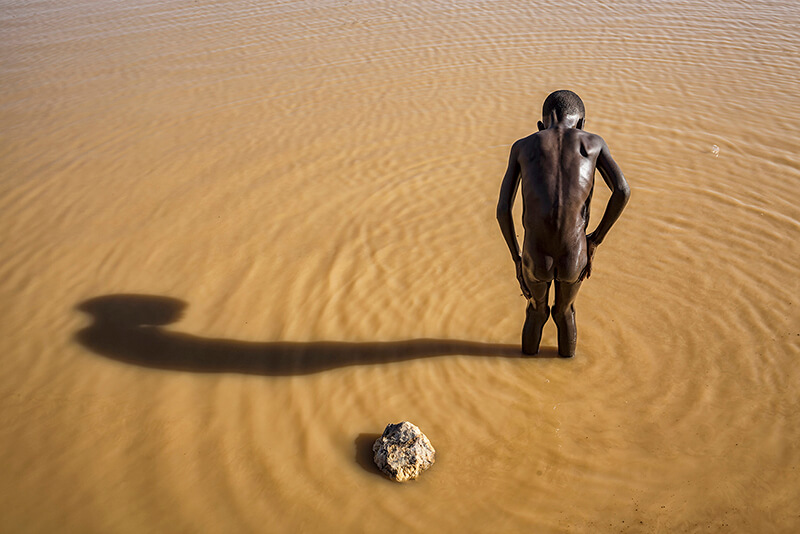
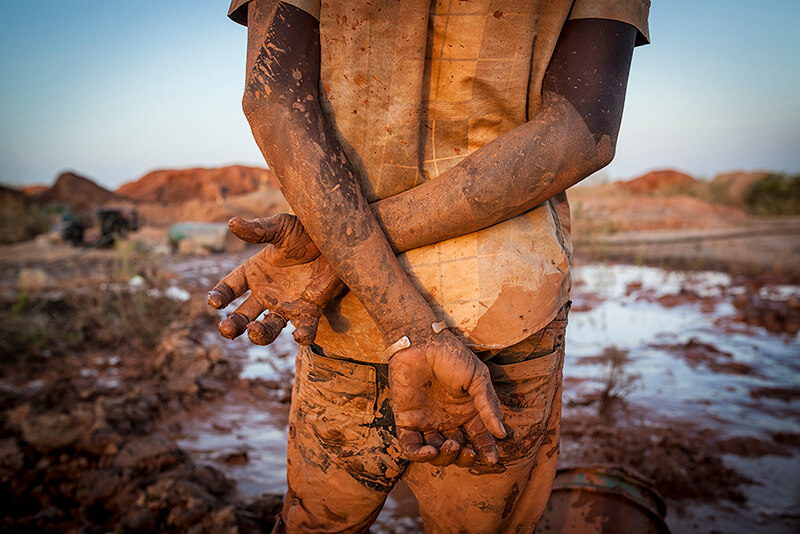
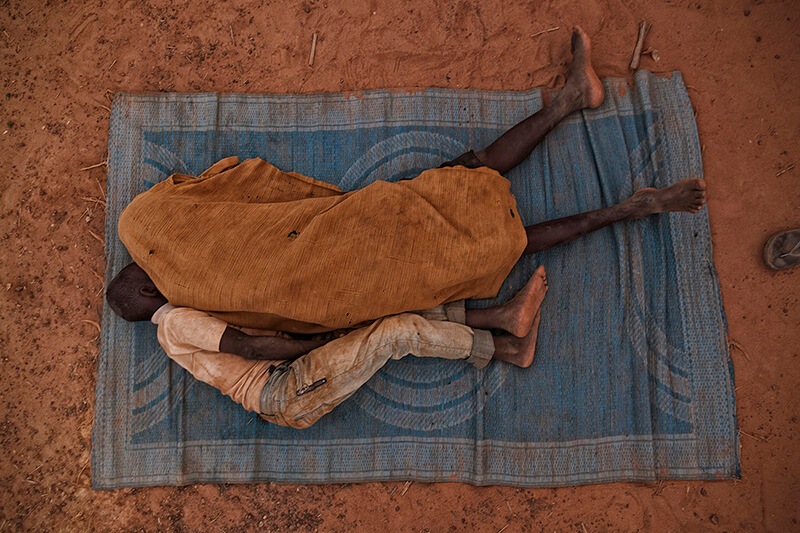
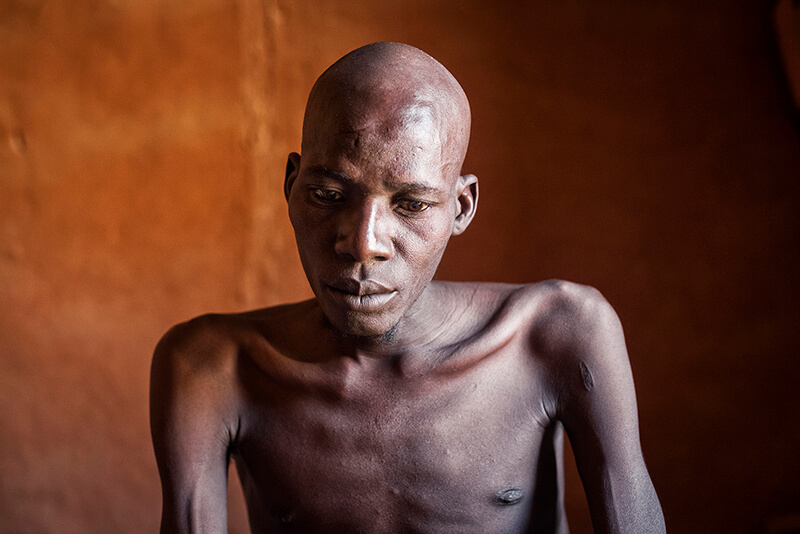
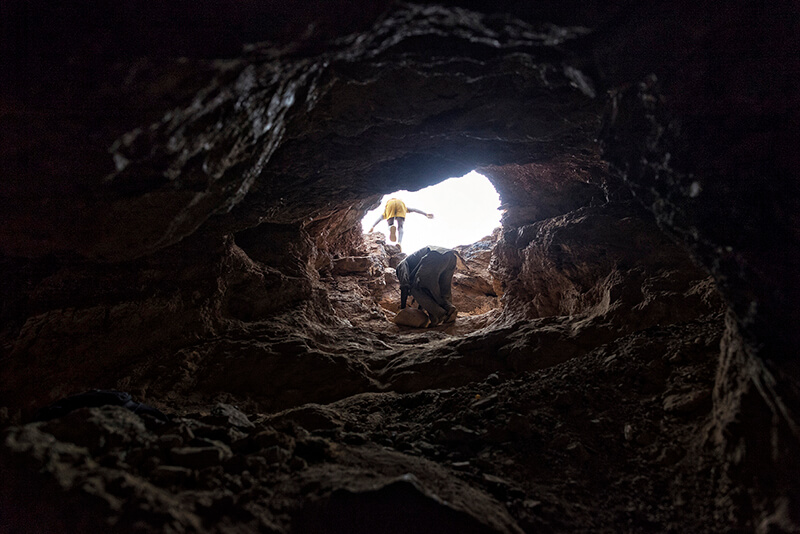
The Last Two documents efforts to save the northern white rhino using advanced reproductive technologies.
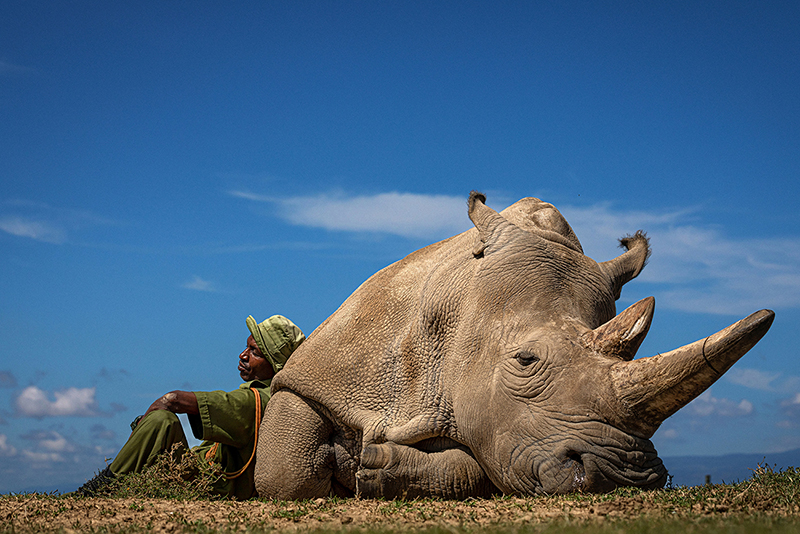
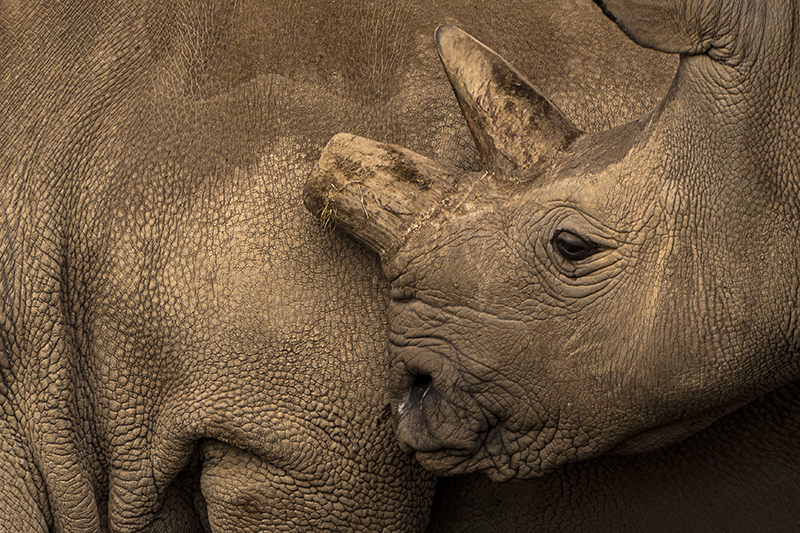
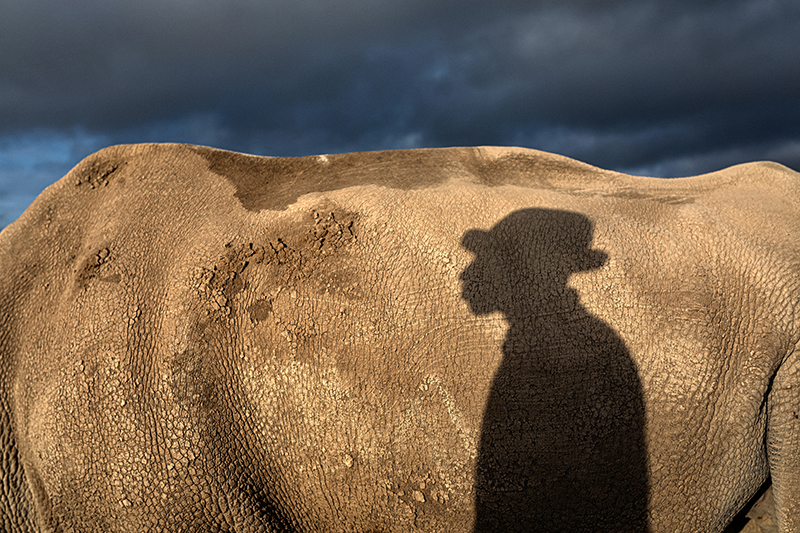
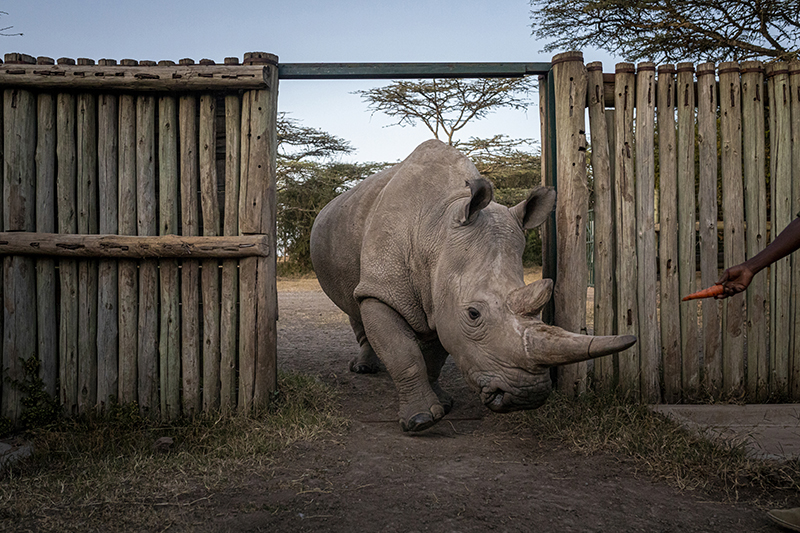
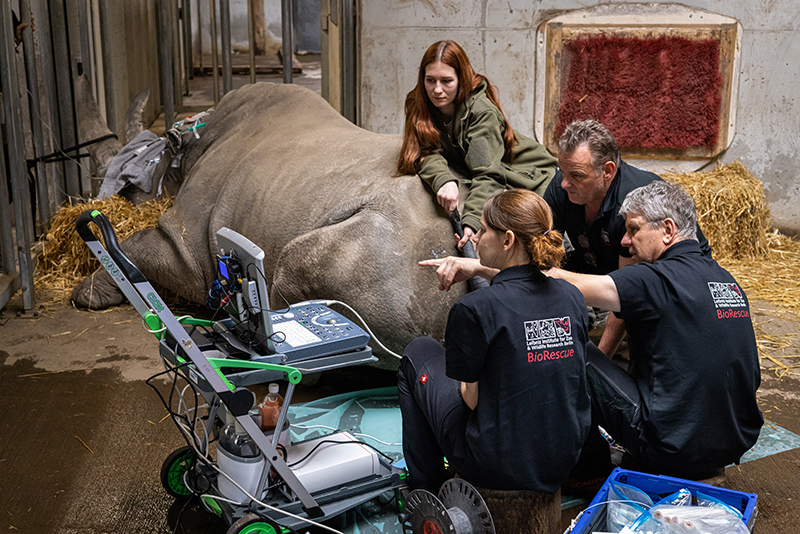



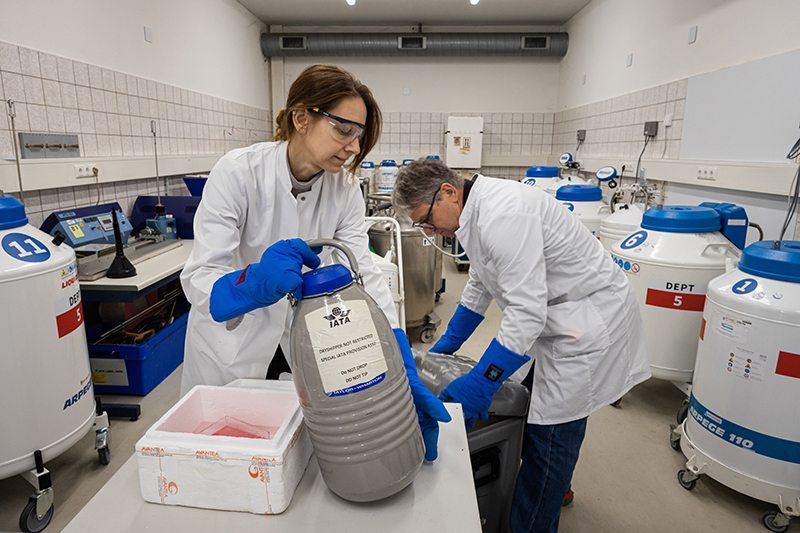
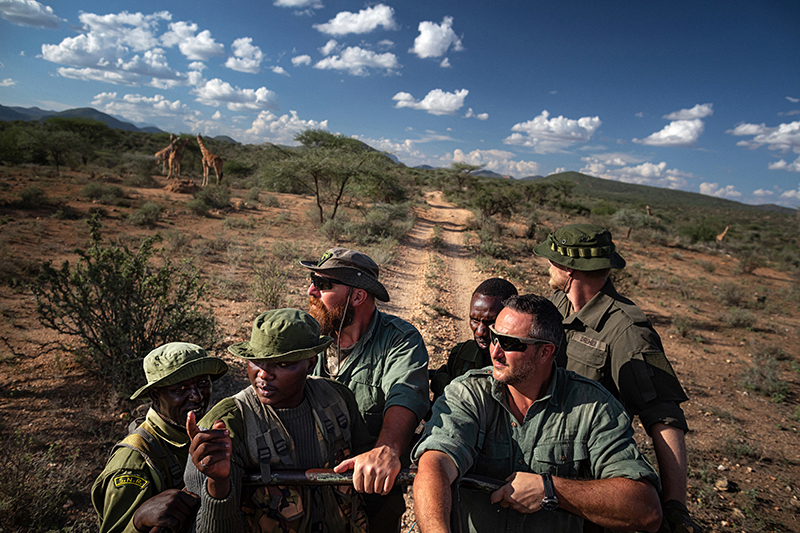

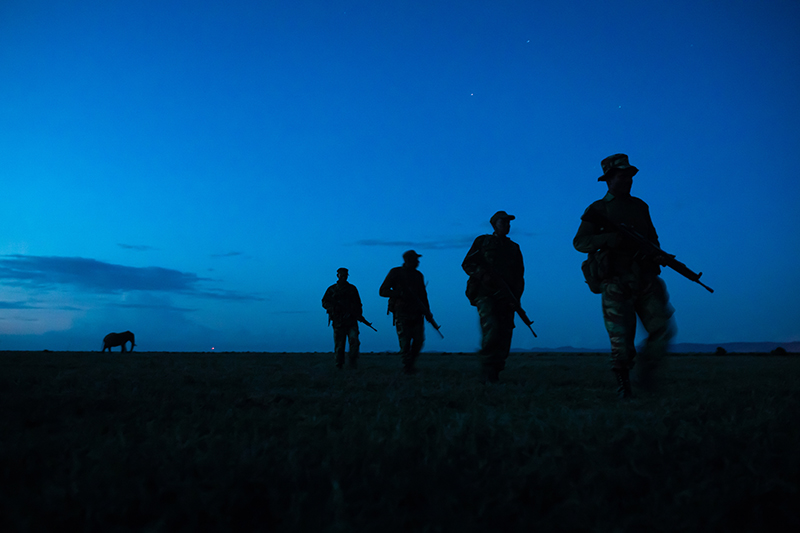
Digging the Future focuses on the dangerous lives of underage gold miners in Burkina Faso, highlighting modern slavery and the adverse effects of gold mining.
| AIRFARE | Flight | USD | Details |
| Aug 2025 | Flight Ljubljana Paris | 236 | Air France, Aug 2025 |
| Flight Paris to Ljubljana | 352 | Air France, Aug 2025 | |
| Nov 2025 | Flight Ljubljana > Kathmandu | 572 | Fly Dubai, Feb 2025 |
| Flight Kathmandu > Nepalganj 2 persons 135 | 270 | Buddha Air, Nov 2025 Team member Kemi Gurung & me | |
| Flight Nepalganj > Juphal, 2 person @ 115 | 230 | Buddha Air, Nov 2025 Team member Kemi Gurung & me | |
| Flight Juphal > Nepalgunj, 2 person @ 115 | 230 | Buddha Air, Nov 2025 Team member Kemi Gurung & me | |
| Flight Nepalgunj > Kathmandu, 2 person @ 135 | 270 | Buddha Air, Nov 2025 Team member Kemi Gurung & me | |
| Flight Kathmandu > Ljubljana | 827 | Fly Dubai, Nov 2025 | |
| Feb 2026 | Flight Ljubljana > Kathmandu | 981 | Fly Dubai, Feb 2026 |
| Flight Kathmandu > Nepalganj, 2 person @ 135 | 270 | Buddha Air Feb 2026 Team member Kemi Gurung & me | |
| Flight Nepalganj > Simikot, 2 person @ 115 | 230 | Buddha Air Feb 2026 Team member Kemi Gurung & me | |
| Flight Simikot > Nepalgunj, 2 person @ 115 | 230 | Buddha Air Feb 2026 Team member Kemi Gurung & me | |
| Flight Nepalgunj > Kathmandu, 2 person @ 135 | 270 | Buddha Air Feb 2026 Team member Kemi Gurung & me | |
| Flight home from Kathmandu to Ljubljana | 965 | Fly Dubai, Feb 2026 | |
| Oct 2026 | Flight Ljubljana > Delhi | 580 | Turkish Airlines Oct 2026 |
| Same day flight Delhi > Shimla, Himachal Pradesh | 134 | Air India Oct 2026 | |
| Flight from Shimla > Dharamshala | 54 | / Option Bus | |
| Flight from Dharamsala > Delhi | 58 | / Option Bus | |
| Flight from Delhi > Ljubljana | 565 | Turkish Airlines Oct 2026 | |
| Jan 2027 | Flight Ljubljana > Delhi | 443 | Air France Jan 2027 |
| Flight Delhi > Leh | 176 | Air India Jan 2027 | |
| Flight from Leh > Delhi | 145 | Air India Jan 2027 | |
| Flight from Delhi > Ljubljana | 585 | Air France Jan 2027 | |
| Airfare overall | 8673 | ||
| OTHER TRAVEL COSTS | USD | Details | |
| Aug 2025 | Taxi to Ljubljana airport | 25 | |
| Airport train to the train station in Paris Montparnasse station | 17 | ||
| Train from Paris Montparnasse station to Saumur train station | 55 | ||
| Taxi from Saumur train station to Shenten Dargye Ling Bön Center near Bleau (15km) | 35 | ||
| Taxi to the Saumur train station from Monastery | 35 | ||
| Train from Saumur train station to Montparnasse station Paris | 55 | ||
| Train from Paris Montparnasse station to the airport | 16 | ||
| Nov 2025 | |||
| Taxi from Kathmandu airport to Kathmandu | 15 | ||
| Taxi from Kathmandu to Kathmandu airport | 15 | ||
| Taxi from the Juphal airport to Hotel | 10 | ||
| Taxi from Hotel to the airport in Juphal | 10 | ||
| Taxi from the airport to Kathmandu | 15 | ||
| Two visits to Triten monastery – 4 x taxi both ways | 80 | ||
| Taxi to the airport in Kathmandu | 15 | ||
| Taxi from Ljubljana airport to home | 25 | ||
| Feb 2026 | |||
| Taxi to Ljubljana airport | 25 | ||
| Taxi from airport to Kathmandu | 15 | ||
| Taxi from Kathmandu to the airport | 15 | ||
| Taxi from the Simikot airport to Hotel | 10 | ||
| Taxi from the Hotel to Simikot airport | 10 | ||
| Taxi from airport to Kathmandu | 15 | ||
| Two visits to Triten monastery – 4 x taxi both ways | 80 | ||
| Taxi from Kathmandu to airport | 15 | ||
| Taxi from Ljubljana airport to home | 25 | ||
| Oct 2026 | Taxi to Ljubljana airport | 25 | |
| Taxi from the airport to Shimla | 15 | ||
| Taxi to Minri monastery from Shimla and back, 6 times, both ways @ 16 usd | 96 | ||
| Taxi from Shimla to the airport | 15 | ||
| Taxi from airport to Dharamshala | 30 | ||
| Taxi from Dharamshala to the airport | 30 | ||
| Taxi costs in and around Dharamshala for visiting the IT firm and other places relevant for the story, 6 times both ways @ 16 | 96 | ||
| Taxi from the airport to the hotel in Delhi | 15 | ||
| Taxi from the hotel in Delhi to the airport | 15 | ||
| Taxi from Ljubljana airport to home | 25 | ||
| Jan 2027 | Taxi to Ljubljana airport | 25 | |
| Taxi from the Leh airport to Leh town | 25 | ||
| Taxi to the Leh airport | 25 | ||
| Taxi from the airport to the hotel in Delhi | 15 | ||
| Taxi from the hotel to the airport in Delhi | 15 | ||
| Taxi from Ljubljana airport to home | 25 | ||
| Other travel costs overall | 1111 | ||
| ACCOMODATION | Days | USD | Details |
| Aug 2025 | Accommodation in a monastery including breakfast (on a donation basis) 6 days @ 50 | 300 | |
| Sep 2025 | |||
| Hotel Das Edlinger with breakfast, in Salzburg 3 nights @117 | 351 | ||
| Nov 2025 | |||
| Atisha Tibetan hotel in Boudhanath, Kathmandu, including breakfast 2 days @ 38 | 76 | ||
| Hotel Mount Putha in Juphal full board 1 day @ 65 | 65 | 35 usd room + 30 usd food, water ( can’t book online – prices stated by Charles) | |
| Blue Sheep Inn Guest House near Barle in Dunai village, full board 5 days @ 50 | 325 | 35 usd room + 30 usd food, water ( can’t book online – prices stated by Charles) | |
| Kayori Mountain Hotel in Bonpo community, Dho Tarap village, full board 5 days @ 50 | 325 | 35 usd room + 30 usd food, water ( can’t book online – prices stated by Charles) | |
| Guesthouse in Ringmo Bonpo community village, full board 5 days @ 50 | 325 | 35 usd room + 30 usd food, water ( can’t book online – prices stated by Charles) | |
| Atisha Tibetan Hotel in Boudhanath, Kathmandu, including breakfast 4 days @ 38 | 152 | ||
| Feb 2026 | |||
| Atisha Tibetan hotel in Boudhanath, Kathmandu, including breakfast 2 days @ 38 | 76 | ||
| Hotel Alice the Wonder Inn, in Humla 16 nights @ 35 | 560 | ||
| Atisha Tibetan Hotel in Boudhanath, Kathmandu, including breakfast 4 days @ 38 | 152 | ||
| Oct 2026 | |||
| Shimla British Resort including breakfast, 6 days @ 39 | 234 | ||
| Dharamshala in Kailasham Stay hotel including breakfast, 6 days @ 37 | 222 | ||
| Hotel The Magic Tree, Paharganj New Delhi including breakfast, 1 day @ 47 | 47 | ||
| Jan 2027 | |||
| Hotel Ladakh Retreat in Leh including breakfast, 21 days @ 43 | 903 | ||
| Hotel The Magic Tree, Paharganj New Delhi including breakfast, 1 day @ 47 | 47 | ||
| Accomodation overall | 4160 | ||
| FOOD | USD | Details | |
| Aug 2025 | |||
| Breakfast, lunch, dinner, water and extra snacks in the monastery (on a donation basis) 6 days @ 35 | 210 | ||
| Sep 2025 | |||
| Lunch and Dinner, water for 4 days in Salzburg | 180 | ||
| Nov 2025 | |||
| Lunch and dinner, water in Kathmandu 2 day @ 35 | 70 | ||
| Extra Food and snacks in the Dolpo, 21 days @ 10 | 210 | ||
| Lunch and dinner, water in Kathmandu 4 days @ 35 | 140 | ||
| Feb 2026 | |||
| Lunch and dinner, water in Kathmandu 2 days @ 35 | 70 | ||
| Lunch and Dinner, water in Humla 16 days @ 35 | 560 | ||
| Extra Food and snacks in the Humla, 16 days @ 10 | 160 | ||
| Lunch and dinner, water in Kathmandu 4 days @ 35 | 140 | ||
| Oct 2026 | |||
| Food on the airport between flight in Delhi airport, 1 x meal, drink | 25 | ||
| Lunch, dinner, water and extra snacks in Shimla, 6 days @ 45 | 270 | ||
| Lunch, dinner, water and extra snacks in Dharamshala, 6 days @ 45 | 270 | ||
| Lunch and dinner, water in Delhi, 1 day @ 35 | 35 | ||
| Jan 2027 | |||
| Food on the airport between flight in Delhi airport, 1 x meal, drink | 25 | ||
| Lunch and dinner, water and extra snacks in Leh, 21 days @ 45 | 945 | ||
| Lunch and dinner, water in Delhi, 1 day @ 35 | 35 | ||
| Food overall | 3345 | ||
| VEHICLE RENTAL & MAINT. | USD | Details | |
| Sep 2025 | |||
| Rent-a-car for 4 days Ljubljana to Salzburg @ 55 + insurance 35 + petrol + road vignette + tunnels (both ways) @ 70 | 460 | ||
| Jan 2027 | |||
| Rent-a-car with a driver in the Leh valley, 21 days @ 60, fuel and road taxes included | 1260 | ||
| Vehicle rental & maintenance overall | 1720 | ||
| ASSISTANT & CONSULTANT | USD | Details | |
| Nov 2025 | Government licensed Trekking Guide and Porters for trekking in Dolpo, 21 days @ 135 | 1785 | Guide 100 usd / day + Horse, horseman, cook 35 usd / day |
| Local Guide in Barle to visit temples, monasteries, ritual, household shrines, bon stupas, half day x 4 times @ 10 | 40 | ||
| Local Guide in Dho Tarap with visits to temples, monasteries, sky burial sites, household shrines, bon stupas, half day x 4 times @ 10 | 40 | ||
| Local Guide in Ringmo to visit Phoksundo Lake with visits to temples, monasteries, household shrines, bon stupas, half day x 4 times @ 10 | 40 | ||
| Local Guide in Humla with visits to temples, monasteries, household shrines, bon stupas, half day x 10 times @ 10 | 100 | ||
| 2026 | Translation of the produced materials into the local language, dialects (Kemi Gurung, Naljor Tsering, Kelsang Norbu Gurung, Stanzin Nyamgal) 30 hours @ 50 | 1500 | |
| Assistant & consultant overall | 3505 | ||
| EQUIPMENT & SUPPLIES | USD | Details | |
| DJI Osmo Action 5 Pro adventure combo | 458 | ||
| Archival Storage Pages for 4×5″ Negatives / 4 images per page (100-Pack), 3 items @ 30.45 | 91 | ||
| Archival Storage Pages for 4×5″ Polaroid Prints / 4 images per page (100-Pack), 3 items @ 30.45 | 91 | ||
| Equipment Insurance by Triglav insurance 10 % of the value of the equipment, 1 year @ 250 / 2025 to 2027 | 500 | ||
| Fuji-Film FP-100C Polaroid Insta film / discontinued films, 108 cassettes @ 100 | 10800 | ||
| Zoom H6 All Black Portable Handy Recorder | 208 | ||
| Equipment & supplies overall | 12066 | ||
| LAB COSTS | USD | Details | |
| 2025/2026 | Hi resolution scanning of 150 images x 4x5inch negatives on Imacon Flex Tight 848 virtual Drum scanner / 1 x Hi-Res 2050 spi; 150 image scans @ 23 including cleaning | 3450 | Brane Horvat, Foto Format d.o.o. company, Ljubljana, Slovenia |
| 2026/2027 | Post production editing, retouching and preparing of 150 images done on Canon digital camera and 150 scanned images for the use in book, exhibitions, and other things; 200 hours @ 20 usd | 4000 | Brane Horvat, Foto Format d.o.o. company, Ljubljana, Slovenia |
| Video post production, coloring and editing 4 min multimedia, 15 hours @ 95 + 10% extra for managing the project | 1567 | Mr. Jan Erazem, Art Rebel 9 d.o.o. company, Ljubljana, Slovenia | |
| Sound editing and post production for the multimedia and video, 10 hours @ 25 + 10% extra for managing the project | 275 | Sound technician Mr. Samo Jurca, 001 d.o.o. company, Ljubljana, Slovenia | |
| Sound studio rent for voice over, 3 hours @ 55 | 165 | 001 d.o.o. company, Ljubljana, Slovenia | |
| English voice over for multimedia, 360 3D VR video and video 3 hours @ 150 | 450 | Mr. Michael Mancy | |
| Royalty free worldwide music for the multimedia, 360 3D VR video and video background | 50 | ||
| Video production – 4 min long Video, 15 hours @ 95 + 10% extra for managing the project | 1567 | Mr. Jan Erazem, Art Rebel 9 d.o.o. company, Ljubljana, Slovenia | |
| Sound editing and post production for the multimedia and video, 10 hours @ 25 + 10% extra for managing the project | 275 | Sound technician Mr. Samo Jurca, 001 d.o.o. company, Ljubljana, Slovenia | |
| 360 3D VR Video post production, coloring and editing 10 min VR video, 50 hours @ 95 + 10% extra for managing the project | 5225 | Mr. Jan Erazem, Art Rebel 9 d.o.o. company, Ljubljana, Slovenia | |
| Sound editing and post production for the multimedia and video, 10 hours @ 25 + 10% extra for managing the project | 275 | Sound technician Mr. Samo Jurca, 001 d.o.o. company, Ljubljana, Slovenia | |
| Copy writer for multimedia, 360 3D VR video and video, 6 hours @ 50 | 300 | Miha Raušl s.p., Ljubljana, Slovenia | |
| Lab costs overall | 17599 | ||
| MISCELLANEOUS | USD | Details | |
| Aug 2025 | |||
| Other expenses in France | 250 | ||
| Nov 2025 | |||
| Visa for Nepal single entry | 50 | ||
| Communications (phone card with internet credit…) | 50 | ||
| Entrances to temples, monasteries temples and other sacred places in Dolpo | 35 | ||
| Trekking Dolpo fee 21 days @ 8 usd | 168 | ||
| Shey Phoksundo National Park Fee, 1 time @ 11 | 11 | ||
| Feb 2026 | |||
| Visa for Nepal single entry | 50 | ||
| Entrances to temples, monasteries and other sacred places in Humla | 35 | ||
| Communications (phone card with internet credit…) | 50 | ||
| Oct 2026 | |||
| Business Visa for India / multiple entry / one year | 120 | ||
| Entrances to temples, monasteries and other sacred places | 55 | ||
| Communications (phone card with internet credit…) | 50 | ||
| Jan 2027 | |||
| Entrances to temples, monasteries and other sacred places | 35 | ||
| Permits for places around Leh that I will visit, 16 days | 22 | ||
| Communications (phone card with internet credit…) | 50 | ||
| 2025 – 2026 | |||
| Coris multirisk Worldwide health insurance / Sum insured: 100.000 EUR 1 year + covid cover + extra for high places above 3500m @ 150 | 300 | ||
| Miscellaneous overall | 1331 | ||
| APPLICANT & TEAM MEMBER | USD | Details | |
| Matjaz Krivic | Research, pre production preparations, production, editing, selecting the best photos for scanning to include in the books, exhibitions, app, video, VR, social media and other things… | 13000 | |
| Kemi Gurung | Fixer, translator, organizer, logistic support, with a good connections to local governance and good relations with local people, 63 days @ 100 | 6300 | |
| Naljor Tsering | Fixer, translator, organizer, logistic support, with a good connections to local governance and good relations with local people, 19 days @ 100 | 1900 | |
| Stenzin Nyamgal | Fixer, translator, organizer, logistic support, with a good connections to local governance and good relations with local people, 21 days @ 100 | 2100 | |
| Kalsang Norbu Gurung | Coordinator, translator and organizer of visits and meetings with IT developers in France and Nepal, 16 days @ 100 | 1600 | |
| Applicant & team member overall | 24900 | ||
| OVERALL | 78410 |
DETAILED TIMELINE
July 2025 – December 2025
Pre-Production and detailed Story Research
The second half of 2025 will be dedicated to an intensive pre-production phase—a critical foundation-setting period in which the conceptual, logistical, and research elements of the Pagan Code project will be brought into sharp focus. This stage will ensure that all upcoming fieldwork—across Nepal, India, and Europe—is carried out with maximum cultural sensitivity, narrative clarity, and operational efficiency.
July 2025
Together with the full interdisciplinary team—anthropologist Professor Charles Ramble, linguists, Tibetan scholars, cultural advisors, and technical collaborators—we will develop a comprehensive fieldwork plan. This plan will outline the specific regions, communities, rituals, and individuals to be documented during each research trip from autumn 2025 onward. It will also identify seasonal timings of festivals, regional weather patterns, and periods of ritual activity that are essential to capture.
In close coordination with local fixers and cultural gatekeepers, I will initiate the permit and access request process for restricted areas like Dolpo, Mustang, Humla in Nepal and Leh, Changtang and Nubra in Ladakh, India. This includes applying for trekking and filming permissions, securing monastery access, and consulting with village elders and spiritual leaders to gain ethical and respectful entry into sacred spaces.
August 2025
This month will focus on finalising all logistical and technical preparations for the first phase of fieldwork. This includes:
This period is also one of conceptual deepening—finalising story structures, interview strategies, and the ethnographic lens through which each location will be approached. It is during pre-production that the heart of the project takes form, balancing spiritual, narrative, and technical dimensions to ensure that the story unfolds as a multi-sensory, rigorous, and deeply respectful chronicle of one of the world’s oldest living spiritual traditions.
Fieldwork (2025-2027)
August 2025
Shenten Dargye Ling Bön Center, France. Approximately 1 week
In August, I will travel to Shenten Dargye Ling, a Bön monastery nestled in the French countryside and one of the most important centers for Bön teachings in the West. Founded by Yongdzin Tenzin Namdak Rinpoche, Shenten has become a vital space for the transmission of Bön outside the Tibetan cultural sphere, drawing together international practitioners, scholars, and lineage holders each summer for intensive retreats, teachings, and rituals.
During my visit, the monastery will also host a Bön Conference curated by Charles Ramble, where he and the broader Pagan Tibet research team will present lectures on the non-monastic, village-based forms of Bön and indigenous pagan practices still surviving in remote Himalayan communities. This conference will serve as a key moment in the Pagan Code project’s effort to bridge oral village traditions with scholarly and technological documentation.
Alongside Charles, I will be joined by core team members Naljor Tsering and Marieke Meelen, as well as French “Tibetophiles” Elie Roux and Ngawang Tsering—two gifted linguists and IT developers who are leading the AI integration side of the project. Their work connects Esukhia (a French-based institute devoted to Tibetan language and textual traditions) with the Buddhist Digital Resource Center (BDRC) in Boston, forming a digital backbone for the Pagan Tibet database. They are developing the tools that allow AI to read, normalise, and search their old Tibetan manuscripts—including village ritual texts that have rarely, if ever, been digitised before.
At Shenten, I will document not only the scholarly conference but also rituals, ceremonial life, and community dynamics, capturing how Bön teachings are preserved, practiced, and reimagined in a Western context. The retreat attracts a diverse global audience—spiritual seekers, academics, and long-time practitioners—many of whom engage deeply with the older, animistic layers of Bön and Himalayan cosmology that lie beneath its institutional forms.
This moment will serve as a rare opportunity to visually and aurally explore the transcultural life of Bön: how teachings born in Himalayan villages now resonate in rural France; how ancient cosmologies are passed on through both oral lineages and digital code.
I will also visit and photograph the team at Esukhia’s offices in France, documenting the technical side of the project—the code, training interfaces, and language models being developed in tandem with fieldwork. Naljor and Marieke will coordinate meetings with Esukhia staff, scholars, and developers, ensuring I can record the collaborative momentum behind the project.
This phase will be captured through a combination of analog and digital photography, immersive 360° 3D VR footage, short-form vertical videos, and audio interviews with Bön lamas, scholars, programmers, and practitioners—offering an intimate view into the evolving global landscape of one of the world’s oldest spiritual traditions.
September 2025
Salzburg, Austria. Visit, 4 days.
As part of the technological backbone of the Pagan Code project, I will travel to Salzburg to visit the headquarters of Transkribus, one of the world’s leading AI-powered platforms for Handwritten Text Recognition. Their software is at the heart of our efforts to teach machines how to read and interpret these recently found ancient Tibetan manuscripts—many of which have never been seen before, much else transcribed or translated.
During this visit, I will document meetings with the core development team to better understand how Transkribus’s AI models are trained, refined, and deployed to work with endangered scripts like the ones central to the ancient pagan and early Tibetan texts. I will also visit the actual data centre where the computational work happens—the physical servers where Charles’s custom Pagan Tibet HTR model is being trained. These machines are effectively “reading” the manuscripts around the clock, learning character by character how to decode centuries-old texts handwritten by monks and village priests.
This visit will provide a rare behind-the-scenes look into the infrastructure that is enabling a digital resurrection of the oldest Tibetan religious manuscripts. Through photography, interviews, and short-form video, I will reveal how cutting-edge European AI technology is collaborating—across time and geography—with Himalayan oral and textual traditions to preserve a spiritual heritage at the edge of extinction.
November December 2025
Dolpo and Kathmandu Nepal. Approximately 4 weeks.
In November and December 2025, I will travel to Dolpo with anthropologist Charles Ramble, Marieke Meelen and field researcher Kemi Gurung. Dolpo is one of the last regions in Nepal where old non monastic village-based forms of Bön and indigenous pagan practices are still actively performed. Our focus will be on the documentation of endangered rituals, daily life, and the communities that sustain these traditions.
We will begin by visiting several communities in Dolpo. In the remote village of Barle, I will document the rarely performed Vampire Subjugation Ritual known as Hrinen—an exorcistic ceremony aimed at neutralising harmful, life-draining forces. Although originally pagan in origin, Hrinen has been partially incorporated into both Buddhist and Yungdrung Bön practices. In Barle, the ritual is still carried out with remarkable complexity and regularity by priests known for their deep specialisation. The ceremony involves intricate effigies, ritual offerings, chants, and sacred gestures, reflecting a cosmology that seeks to restore balance between seen and unseen forces.
I will also document the Rung Festival, a month-long community ritual held after the Chheybue New Year in the villages of Sahartara and Laun. Celebrated primarily among the Tarali Magar communities in Dolpo’s middle belt, it features song, dance, and offerings to ancestral and territorial deities. Central to the festival is the seasonal journey of the village god Chyopata, who returns from the Terai region to reside again in the village, symbolising spiritual renewal and social harmony. These ceremonies, rooted in animistic cosmologies, exemplify how ritual sustains peace, cohesion, and a living relationship with the land.
In addition to documenting these major events, I will photograph visits to pagan and old Bön and pagan temples, monasteries, household shrines, and sky burial sites, and conduct interviews with Bön lamas, village priests, and community elders. I will also capture portraits of children and school life to reflect intergenerational continuity.
This fieldwork is urgent: many of the practitioners are elderly or have ceased performing these rituals altogether. Charles’s decades-long work in Dolpo and his trusted relationships with local leaders and spiritual figures will ensure respectful, in-depth access to sacred spaces and private ceremonies. During rituals, Ramble will use Automatic Speech Recognition models to assist with real-time transcription and documentation of oral recitations, which will later be fed into the development of an AI model to help preserve and understand this vast, endangered oral tradition.
My multimedia output will include analog and digital photographs, 360° 3D VR video, short-form vertical videos for social platforms, sound recordings, and interviews—ensuring that this fragile yet vibrant culture is preserved and shared in both scholarly and accessible ways.
At the conclusion of this phase of fieldwork, I will return to Kathmandu, where a small but dedicated group of Bön monks at Triten Norbutse Monastery will be engaged in a groundbreaking new task for the Charles’s Pagan Tibet project: applying Natural Language Processing techniques to centuries-old manuscripts.
These monastics—deeply trained in ritual, liturgy, and the interpretive nuances of pagan scripture—will be working on normalising ancient texts and decoding abbreviations, which often appear as highly condensed syllabic clusters unique to particular lineages or regions. Their work will play a crucial role in piecing together the big puzzle of how spirituality has evolved in the Trans-Himalayan region and preparing these texts for machine learning and searchability, forming the backbone of a future digital corpus of this old pagan literature.
This phase marks a rare convergence of monastic hermeneutics and computational linguistics. The monks will act not only as scribes but as cultural codebreakers, consulting closely with anthropologist Charles Ramble and his broader research team to resolve textual ambiguities, variations in spelling, contextual meanings, and ritual-specific terminology. Their input will help illuminate obscure references, correct historical misreadings, and guide the construction of a database that honours the intricacy and depth of these spiritual traditions.
I will document this highly specialised collaboration through photography, interviews, and video—capturing the intellectual intensity and spiritual focus of the monks as they engage with AI tools, bridging ancient textual worlds with cutting-edge technology. This rare footage will showcase not only the technical process, but the cultural and emotional weight of entrusting digital systems with the task of preserving a sacred lineage that has for centuries relied on human memory, oral transmission, and lived experience.
This stop in Kathmandu is an image of continuity, where traditional knowledge holders are no longer just subjects of documentation, but active co-creators in the reimagining of their heritage for future generations.
February 2026:
Humla and Kathmandu Nepal. Approximately 3 weeks.
In February 2026, I will travel to the remote Himalayan region of Humla, Nepal, accompanied by anthropologist Charles, Marieke and field researcher Kemi. Unlike Dolpo, where rituals are practiced across different villages, our work in Humla will focus on a single community, where a rich synthesis of pagan, Bön, shamanic, and animistic traditions persists through seasonal rites and everyday life. This concentrated approach allows for in-depth documentation of the region’s spiritual practices during winter, a time when many of these rituals are most actively performed.
Our primary focus will be the documentation of the Soul Retrieval Ritual (bla ’gugs), an ancient Bön healing ceremony that aims to restore the life force (bla) when it has been lost due to shock, illness, or spiritual imbalance. Through chants, ritual offerings, and guided spiritual journeys into invisible realms, the shaman reclaims fragmented aspects of the soul and reunites them with the individual, restoring balance and vitality. This deeply compassionate rite reveals the ancient Bönpo belief that both personal and environmental harmony depend on the full presence of the soul within the body.
We will also document the Mane Festival, a major winter ceremony celebrated among Humla’s Lama and Nyinba communities in mid-Magh (January/February). Over four days, villagers don traditional attire and masks, invoke the goddess Bhuwani, and make offerings of chhyang (barley brew) and other ritual items to lamas and shamans. These processions and communal feasts, set against a backdrop of music and drum-led dance, reinforce social bonds and spiritual resilience at the coldest and most challenging time of year. Although the formal festival lasts four days, celebrations often extend longer, reflecting the communal strength and vitality fostered through shared ritual.
Throughout our time in Humla, I will photograph visits to sacred sites, household shrines, and community rituals, and conduct interviews with shamans (Dhami, Jhākri, and Dangri) as well as village elders and non monastic Bön practitioners. These spiritual intermediaries continue to play essential roles in healing, divination, conflict resolution, and maintaining the delicate balance between humans and nature. Their practices, often transmitted through lineage or spirit dreams, involve trance states, drumming, chanting, and offerings to local deities.
Charles Ramble’s decades of ethnographic experience and his relationships in Humla will be vital for facilitating access to sacred rituals and community trust. During ceremonial performances, Ramble will gather field data using Automatic Speech Recognition tools to transcribe and analyse oral recitations. This digital corpus will contribute to the development of a machine learning model that can eventually support automatic transcription and analysis of Himalayan oral traditions.
My multimedia documentation will include analog and digital photography, vertical video segments for digital platforms, immersive 360° 3D VR video, audio recordings, and interviews with shamans and community leaders. By focusing on a single village during the heart of winter, this phase of the Pagan Code project offers a unique and concentrated lens into living Himalayan spiritual systems under pressure, yet full of vitality and cultural continuity.
At the conclusion of this phase of fieldwork, I will return to Kathmandu again to follow up on the same group of Bön monks at Triten Norbutse Monastery that will by now be applying Natural Language Processing (NLP) techniques to centuries-old manuscripts for some time.
These monastics—deeply trained in ritual, liturgy, and the interpretive nuances of pagan scripture—will be working on normalising ancient texts and decoding abbreviations, which often appear as highly condensed syllabic clusters unique to particular lineages or regions. Their work will play a crucial role in preparing these texts for machine learning and searchability, forming the backbone of a future digital corpus of old pagan literature.
October 2026:
Shimla and Dharamsala, India. Approximately 3 weeks.
This phase of the project will take me to Menri Monastery in Dolanji, Himachal Pradesh—the spiritual heart of the Bön tradition and the largest Bön monastery in the world. Re-established in exile after the 1959 diaspora, Menri has become a vital stronghold for the preservation of Bön’s ancient cosmologies, rituals, and monastic scholarship. Here, I will document the daily rhythms of monastic life, ritual practices, and spiritual teachings, with a special focus on the monastery’s extensive library of sacred manuscripts, many of which preserve oral and written traditions rooted in pre-Buddhist Himalayan paganism.
At the core of this visit will be an interview with H.H. Lungtok Dawa Dhargyal Rinpoche, the 34th Menri Trizin and current spiritual head of Bön. His reflections on the future of Bön in an era of digital transformation and cultural globalisation will serve as a pivotal narrative thread in the project—linking tradition, exile, and technological modernity.
During this visit, I will also be joined by my team member Kalsang Norbu Gurung, a Mustang-born Bönpo scholar. Kalsang previously studied at Menri and specialises in the analysis of rare Eastern Himalayan Bön manuscripts. His work focuses on a remarkable collection of around sixty texts—copied in Dolanji—that explore themes such as non-monastic village rituals, cosmogonic myths, and early narratives of Tonpa Shenrab, the legendary founder of Bön. Kalsang’s deep familiarity with the textual tradition and his lived experience within the monastic system will provide an essential bridge between the academic, spiritual, and visual dimensions of the project.
From Menri, Kelsang and I will continue to Dharamsala, the vibrant nerve centre of Tibetan exile culture and intellectual life. There, I will document the groundbreaking work of Esukhia, a nonprofit IT collective working at the frontier of AI-powered preservation of Tibetan textual heritage. Their Natural Language Processing tools, recently integrated into the Transkribus platform, are now capable of aiding monks and scholars in the transcription and analysis of ancient manuscripts—marking a historic convergence of artificial intelligence with Himalayan spiritual scholarship.
I will be joined here by core collaborators Naljor Tsering, Marieke Meelen, Elie Roux, and Ngawang Tsering, who are developing and refining the AI tools. Together, we will document the cross-cultural and interdisciplinary collaboration behind this digital renaissance—capturing both the technical process and the human stories of those working to safeguard Tibet’s endangered literary and spiritual heritage.
This chapter will also include a major outreach effort: a photographic and video interview with H.H. the Dalai Lama. His 1978 recognition of Bön as the fifth official religion of Tibet was a landmark affirmation of its historical and spiritual importance. Building on my long standing relationship with Tibet House US and its founder, Dr. Robert Thurman, as well as my past photographic work with the Dalai Lama, I will seek to document his personal reflections on Bön’s ancient, village-based traditions—and how their values resonate in today’s fractured and hyper-connected world.
Throughout this journey, I will gather analog and digital photography, 360° 3D VR content, short documentary and vertical videos, and in-depth interviews with monks, lamas, scholars, and developers. This multimedia material will reveal how the world’s oldest spiritual systems are not only surviving—but evolving—at the intersection of sacred tradition, exile, and artificial intelligence.
January 2027:
Ladakh, India. Approximately 4 weeks
In the deep winter of January 2027, I will return to Ladakh to document some of the last remaining threads of animistic and pre-Buddhist spiritual traditions that still quietly shape life in this remote Himalayan region. Despite centuries of Buddhist influence, Ladakh remains a mosaic of ancient pagan practices, where shamans, oracles, astrologers, and traditional healers continue to serve as vital spiritual figures in their communities.
Accompanied by my Ladakhi team member and fixer Stanzin Nyamgal, our journey will begin in Choglamsar, where I will photograph and interview Lha-mo Tsering, a female oracle who enters trance states to diagnose and heal spiritual imbalances. From there, we’ll travel to the high-altitude Changthang plateau to witness and document a rare Oracle Festival—a winter ritual gathering where trance-mediums invoke local deities and perform ecstatic ceremonies to restore balance and protect their communities.
We’ll then revisit the village of Sabu, where I previously photographed the revered shamanic healer Ayu Lha-mo in 2008. Although she has passed, her son Ayu Lha-po has inherited her role as an oracle. Documenting this generational transmission of sacred knowledge will provide powerful visual insight into the fragile continuity of Ladakh’s indigenous spiritual systems.
Our route will then lead westward to the Dha and Hanu valleys, home to the Brokpa people—an Indo-European ethnic group whose animistic pantheon has persisted beneath the surface of Buddhist practice. Here, we will observe preparations for the Bono-na festival, a traditional agricultural thanksgiving ritual in honour of the Minaro deities, filled with chants, offerings, and ceremonial regalia. The festival embodies Ladakh’s ancestral bond with the land and its unseen guardians.
We will also travel to Nubra Valley to meet Tyakshi Onpo, one of the last remaining Onpos—Ladakhi astrologer-priests whose cosmological knowledge and ritual practice guide community decisions on health, agriculture, and spiritual protection. With only a handful of Onpos left, documenting their rituals and oral wisdom is both urgent and historically invaluable.
Parallel to this spiritual and ethnographic documentation, I will join archaeologist Quentin Devers who is researching Ladakh’s pre-Buddhist past through the mapping and interpretation of ancient pagan petroglyphs, inscriptions, and ceremonial sites scattered across the region. His work provides a vital material record of the indigenous cosmologies that preceded organised Buddhism—revealing stone-carved traces of ancestral deities, territorial cults, and forgotten rituals. Together, we will visit select sites where archaeology, oral tradition, and present-day practice converge—offering a layered narrative of Ladakh’s spiritual evolution across centuries.
Throughout this immersive fieldwork, I will use analog and digital photography, 360° 3D VR, vertical and short documentary videos, ritual sound recordings, and in-depth interviews to build a multi-sensory archive of Ladakh’s living and ancient pagan heritage. This phase of the Pagan Code project will bridge the past and the present—preserving vanishing knowledge systems while revealing how they remain woven into the everyday spiritual fabric of Himalayan life.
Post-Production and Project Distribution (2026 and 2027)
March 2027 – April 2027:
The post-production phase will be a meticulous and creatively immersive process, transforming the extensive raw material collected across Mustang, Dolpo, Humla, around Ladakh and Europe and other field sites into a refined, cohesive body of work. This stage is not only technical—it is curatorial and spiritual, requiring careful attention to storytelling, atmosphere, and authenticity.
At its heart will be the selection and refinement of 108 final images—a sacred number in Himalayan cosmology—divided equally between analog (film-based) and digital photography. These 54 analog and 54 digital photographs will form the visual backbone of the project’s exhibition and publication components. The editing process will balance aesthetic quality with ethnographic and narrative significance, ensuring that each image reflects the complexity and dignity of the individuals, rituals, and landscapes portrayed.
In parallel, I will develop a multimedia presentation that weaves together still images with documentary video, time-lapse sequences, immersive 360° VR footage, ambient field recordings, ritual music, chants, and interviews. This dynamic presentation will be tailored for both gallery and digital installations, offering audiences a sensory, layered entry point into the world of Himalayan paganism and ancient Bön spirituality.
To deepen the multi-sensory experience, the exhibition will also incorporate carefully selected tactile and olfactory elements: sacred ritual objects (offered or documented with permission), locally sourced herbs, incense, and the distinct smells of monastic life and high-altitude rituals. These elements will complement spatialised soundscapes captured in situ—ranging from trance rituals to protective chants—bringing visitors closer to the emotional and spiritual environment of these practices.
This phase will also include the preparation of detailed exhibition materials, including wall texts, captions, and scholarly commentary provided by Professor Charles Ramble and other academic collaborators, ensuring that every element of the final installation is context-rich and accessible without oversimplification.
The post-production process will draw on a wide range of tools and collaborators—including sound designers, translators, video editors, and cultural consultants—and will be guided by a commitment to integrity, reciprocity, and nuance. The ultimate goal is to ensure that the final body of work honours the people and traditions it documents, while inviting global audiences into a meaningful and respectful encounter with Himalayan animism, ancient village-based Bön, and pagan ritual heritage.
May 2027 – December 2027:
As the project reaches its final phase, a core focus will be placed on sharing the work first and foremost with the communities who made it possible. This is not just a gesture of reciprocity—it is an integral part of the project’s purpose: to ensure that the documentation, stories, and images serve the cultural preservation, self esteem, pride, and education of the very people whose traditions are being recorded.
In collaboration with local partners and schools, I will launch a series of language and culture learning materials tailored for children in Mustang, Dolpo, Humla (Nepal), and Leh, Nubra and Changtang (Ladakh, India). These will include illustrated books in multiple local language dialects, digital resources, and an interactive educational mobile app designed to support young learners in reconnecting with their endangered linguistic and cultural and spiritual heritage.
Accompanying this will be community-based exhibitions featuring photography, video, VR, and sound recordings from the project, held in village schools, local cultural centres, and monasteries—in the exact regions where the material was gathered. These events will provide local communities with a chance to see themselves and their traditions represented with dignity and depth, sparking intergenerational conversations and renewed interest in ancestral knowledge. Village priests, monks, elders, shamans, Amchis, and oracles featured in the project will be invited to participate and speak at these local events, making them moments of community reflection and pride.
Following this local unveiling, the project will scale outward into larger immersive exhibitions featuring large-format prints, documentary videos, 360° VR installations, and ritual soundscapes, exhibited in Bön monasteries, in the villages, universities, museums, and cultural venues across Nepal and Ladakh and the regions with significant Bönpo diaspora communities, including France, Mexico, Brasil, Canada and the U.S.
Ultimately, Pagan Code will be presented to global audiences through a series of high-profile international photo festivals, museums, galleries, and cultural institutions, bringing the voices and visual legacies of these endangered traditions to the broader world. At each venue—whether a Himalayan village school or a major European museum—the multimedia work will be accompanied by contextual essays and exhibition texts written by Professor Charles Ramble, offering scholarly insight into the complex interplay between old forms of village Bön, Himalayan paganism, and their contemporary relevance in an age of cultural loss and digital preservation.
In all its forms, this project aims not just to archive—but to activate cultural memory and spark dialogue across borders, languages, and generations.